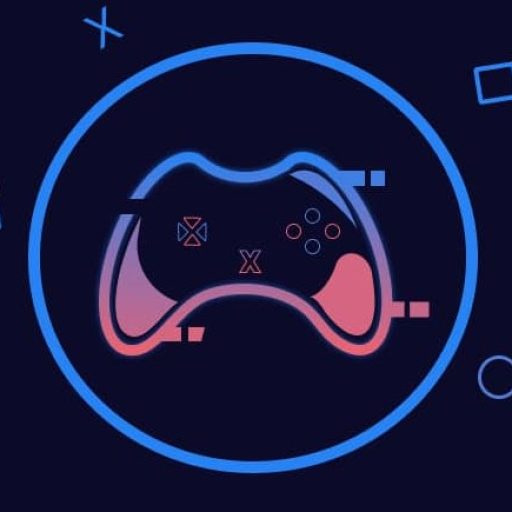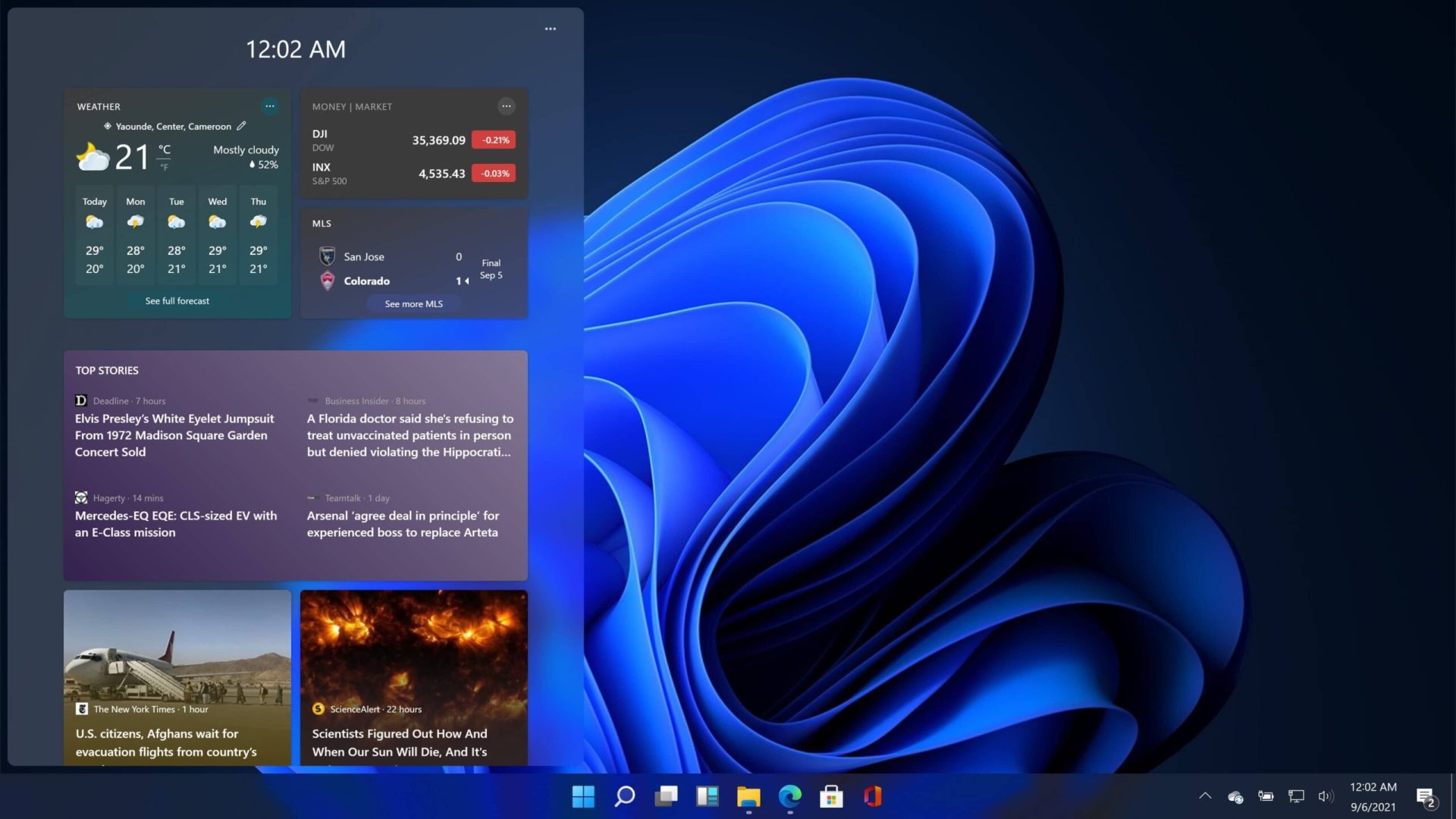
How To Speed Up Windows 11
Introduction
So you decided to join the Windows Insider program so that you could get the latest Microsoft updates, test them and give your own opinion about the new updates before they are even released to the general public.
You set your Windows 10 PC to auto-download the latest updates and finally connect your PC to your internet via WI-FI then carry on with your daily activities.
Sometime later, you boot your PC up and find from your windows 10 notification center that your updates have been downloaded and are ready to install. You then decide to check them out, then you discover this surprising notice.
![How To Speed Up Windows 11 [Full Guide With Images]](https://terraexploration.space/wp-content/uploads/How-To-Speed-Up-Windows-11-Full-Guide-With-Images61.jpg)
Your PC is eligible for Windows 11 upgrade. You are so happy and excited about being one of the first people to use Windows 11 worldwide. You hurriedly made backup copies of your PC’s information, [JUST IN CASE] then smashed the UPGRADE TO WINDOWS 11 button.
After about 30 Minutes to 1 Hour of impatiently sitting in front of your PC, watching Windows 11 setup boot and reboot your PC, your Windows 11 operating system finally boots up and shows you the settings screen. You then finalize all settings and get to your desktop, to see the iconic beautiful Windows 11 blue desktop background flower image.
![How To Speed Up Windows 11 [Full Guide With Images]](https://terraexploration.space/wp-content/uploads/How-To-Speed-Up-Windows-11-Full-Guide-With-ImagesBanner20-1024x576.png)
After breathtaking “WOW” moments of exploring your new Windows 11 operating system options here and there, you decide to test how good, performance-wise your beautifully looking operating system is.
You decide to play 4k videos, high definition music, open Microsoft Word, or even your favorite programming IDEs, then you notice something, everything seems to be slow. Almost as if your PC’s performance has been nerfed.
You then open your browser and check for Windows 11 PC requirements, just to be sure your PC actually meets the requirements, despite Microsoft validating your PC. Unfortunately, your PC actually meets the requirements. ??
Your anxiousness turns to anger, then frustration, and the idea of downgrading actually crosses your mind. But then, you probably started searching how to speed up Windows 11 and stumbled on this website somehow. Well, if you are here, then consider your problem already fixed.
Upgrade to Windows 11
Description
Sometimes we have computers that are good enough to do many cool things like gaming, running heavy applications, handling high graphics, rendering great images, and so on. But we might not just be able to do what we want, even with performant computers, and rather spend most of our time trying to deal with a slow operating system.
The problem is, hardware is so diverse and complex, and you have to have a good understanding of it, in order to fix certain problems. For example, on the Microsoft website, you will see something like 4 GB RAM as minimum memory necessary for Windows 11 OS.
But the problem is, there are many kinds of RAM, yes, not all 4 GB RAMs are the same, and you might not have known.
There DDR2, DDR3 and DDR4 SDRAMs. And as you might have guessed, DDR4 SDRAMs are SIGNIFICANTLY more performant than DDR2 or DDR3 SDRAMs. And this goes for all, if not, most hardware, like CPUs, GPUs, HDDs, SSDs, and so on.
So, you might have been using a 4 GB DDR2 on Windows 10 smoothly then transitioned to Windows 11 and started having problems. At this point in time you might be thinking of upgrading your hardware, which will be most preferable, but before doing that consider trying to optimize your PC, which will be more economic.
Sometimes, software processes in your PC take a toll on your hardware, and controlling or stopping those processes can go a long to boost your PC’s performance.
In the following procedure, we will show you how to speed up Windows 11 PC in a few steps without doing things like core overclocking or anything which will endanger your PC’s health.
NB: WE WILL NOT BE RESPONSIBLE FOR ANY DAMAGE YOU MAY CAUSE TO YOUR PC. MAKE SURE YOU BACKUP YOUR INFORMATION AND CREATE SYSTEM RESTORE POINTS BEFORE STARTING THIS TUTORIAL.
How To Speed Up Windows 11
Time Needed : 01 hours 30 minutes
Quickly and easily speed up Windows 11 by following the 10 simple steps below.
USING SYSTEM CONFIGURATION [MS-CONFIG]
A) While on the desktop, click the search area on the taskbar, type in ”Run”, then hit the enter key, or simply press the “WINDOWS + R” key combination.
 B) While in the run app, type ”msconfig.exe” and hit enter to launch the ”System Configuration” menu.NB: OK, SO AS FROM HERE YOU’VE GOT TO BE VERY CAREFUL BECAUSE YOU DON’T WANT TO MESS UP WITH YOUR BOOT-UP PROCESS SO DO ONLY WHAT IS SHOWN IN THIS TUTORIAL.
B) While in the run app, type ”msconfig.exe” and hit enter to launch the ”System Configuration” menu.NB: OK, SO AS FROM HERE YOU’VE GOT TO BE VERY CAREFUL BECAUSE YOU DON’T WANT TO MESS UP WITH YOUR BOOT-UP PROCESS SO DO ONLY WHAT IS SHOWN IN THIS TUTORIAL. C) Click on the ”Boot” tab, which is the second tab from the left.
C) Click on the ”Boot” tab, which is the second tab from the left. D) While in the boot tab, hit the ”Advanced options” button.
D) While in the boot tab, hit the ”Advanced options” button. E) A new window will pop up. At its top left side, you will find a checkbox labeled ”Number of processors’‘ with a drop-down menu containing the total number of processors.F) At the top right of this window, appears a checkbox labeled ”Maximum memory” with an input value box under it.G) Check the box labeled ”Maximum number of processors”, click the drop-down menu under it, and select the highest value in that menu. This sets the Windows OS to use the highest number of threads available on your PC, which will go a long way in fixing a slow Windows 11 OS.H) Check the box labeled ”Maximum memory”, adjust the values to reach the PC’s maximum RAM then click ”OK” at the bottom of the window.This will automatically set Windows OS to use the maximum available memory (RAM), which can greatly contribute to fixing a slow Windows 11 OS.I) Click ”Apply” in the MS-Config window and click ”OK” to confirm changes then restart Your PC.
E) A new window will pop up. At its top left side, you will find a checkbox labeled ”Number of processors’‘ with a drop-down menu containing the total number of processors.F) At the top right of this window, appears a checkbox labeled ”Maximum memory” with an input value box under it.G) Check the box labeled ”Maximum number of processors”, click the drop-down menu under it, and select the highest value in that menu. This sets the Windows OS to use the highest number of threads available on your PC, which will go a long way in fixing a slow Windows 11 OS.H) Check the box labeled ”Maximum memory”, adjust the values to reach the PC’s maximum RAM then click ”OK” at the bottom of the window.This will automatically set Windows OS to use the maximum available memory (RAM), which can greatly contribute to fixing a slow Windows 11 OS.I) Click ”Apply” in the MS-Config window and click ”OK” to confirm changes then restart Your PC.
USING THE PERFORMANCE MONITOR
A) Go to ”Start Menu>All Apps>Windows Tools>Performance Monitor”.


 B) In the ”Performance Monitor” left side pane, click on the ”Data Collector Sets” drop-down menu.C) Under “data collector sets”, click ”User Defined”.D) Right-click within the main window pane and select ”New>Data Collector Set” in the expansion menu.
B) In the ”Performance Monitor” left side pane, click on the ”Data Collector Sets” drop-down menu.C) Under “data collector sets”, click ”User Defined”.D) Right-click within the main window pane and select ”New>Data Collector Set” in the expansion menu. E) In the new window, rename the data collector set and click ”Create manually (Advanced)” then click on ”Next”.
E) In the new window, rename the data collector set and click ”Create manually (Advanced)” then click on ”Next”.
 G) In the next window, click ”Add” at the top right.
G) In the next window, click ”Add” at the top right. H) At the bottom left pane of the next window scroll down to the highest number you see and click the ”Add” button.
H) At the bottom left pane of the next window scroll down to the highest number you see and click the ”Add” button. I) In the top-left pane, scroll down to process and click the drop-down menu arrow, then scroll down to the ”Thread Count” select it, and click ”Add”.
I) In the top-left pane, scroll down to process and click the drop-down menu arrow, then scroll down to the ”Thread Count” select it, and click ”Add”.
 This will make Windows OS detect the threads which were activated using the system configuration menu and will, in turn, dedicate applications to use them.
This will make Windows OS detect the threads which were activated using the system configuration menu and will, in turn, dedicate applications to use them. J) Click ”OK” on this window, then click ”Next” till the last window where you will select the ”Save and close’‘ option, then click on ”Finish”.
J) Click ”OK” on this window, then click ”Next” till the last window where you will select the ”Save and close’‘ option, then click on ”Finish”. You will notice a cube-like icon in the performance monitor window, which is a save profile of your configuration and will take place immediately after a Fresh Reboot.
You will notice a cube-like icon in the performance monitor window, which is a save profile of your configuration and will take place immediately after a Fresh Reboot.
USING ADVANCED SYSTEM SETTINGS
A) On your keyboard, press the “WINDOWS + E” key combination, and click on the ”This PC” icon found on the Windows file explorer left navigation pane.
 B) Within the opened window right-click on any empty space and click properties. This will open the ”System Properties” window.
B) Within the opened window right-click on any empty space and click properties. This will open the ”System Properties” window. C) On the main window-pane of the newly opened window click on ”Advanced system settings” which will open the ”Advanced” tab within the “Advanced properties window“, with administrator privileges.
C) On the main window-pane of the newly opened window click on ”Advanced system settings” which will open the ”Advanced” tab within the “Advanced properties window“, with administrator privileges. D) In the ”Advanced” tab, click on ”Settings” to open the ”Performance” menu.
D) In the ”Advanced” tab, click on ”Settings” to open the ”Performance” menu. E) In the newly opened window, you can select the option ”Let Windows choose what is best for my computer”.If you are looking forward to boosting a low-end PC, select ”Adjust for best performance” but Note that your windows interface appearance will greatly be sacrificed to free the RAM for more performance.
E) In the newly opened window, you can select the option ”Let Windows choose what is best for my computer”.If you are looking forward to boosting a low-end PC, select ”Adjust for best performance” but Note that your windows interface appearance will greatly be sacrificed to free the RAM for more performance. F) Within that same window, click the ”Advanced” tab, which is next to the “Visual Effects” tab, then click the ”Change” button under that tab.In the newly opened window, we will be trying to increase the available RAM by borrowing some memory from the hard disk drive to add to the existing RAM.This can be a big booster to a PC and can help you speed up Windows 11 PC.
F) Within that same window, click the ”Advanced” tab, which is next to the “Visual Effects” tab, then click the ”Change” button under that tab.In the newly opened window, we will be trying to increase the available RAM by borrowing some memory from the hard disk drive to add to the existing RAM.This can be a big booster to a PC and can help you speed up Windows 11 PC. G) In the ”Virtual Memory” window, uncheck the box for ”Automatically manage paging file size for all drives” at the top, to unlock all other options in this window.Select the drive where Windows 11 OS is installed.H) Select the ”Customize size” option below, which will permit you to edit your paging file size.I) In the ”Initial size” section enter your default PC RAM size in megabytes.My RAM is 16 GB, but since 1024 MB makes 1 GB my initial size will be 1024 x 16 giving 16384 MB.
G) In the ”Virtual Memory” window, uncheck the box for ”Automatically manage paging file size for all drives” at the top, to unlock all other options in this window.Select the drive where Windows 11 OS is installed.H) Select the ”Customize size” option below, which will permit you to edit your paging file size.I) In the ”Initial size” section enter your default PC RAM size in megabytes.My RAM is 16 GB, but since 1024 MB makes 1 GB my initial size will be 1024 x 16 giving 16384 MB. J) The next thing is to enter the ”Maximum size in (MB)”. Now don’t just go putting crazy figures because you want to increase your performance. There is an optimum value that can be input.To get this value, the rule of thumb is to first multiply your actual RAM by 1.5 and add the answer to your actual RAM.Next, multiply all your GB values by 1024 to convert them to MB values.For example;My RAM is 16 GB so we have to multiply 16 x 1.5 = 24Then add 24 + 16 = 40And finally multiply 40 x 1024 = 40960 MB.We can then type the value 40960 in the ”Maximum size in (MB)” box.(Feel free to correct my math in the comments)K) Click on ”Set”, ”Apply”, ”OK” and Restart your PC.
J) The next thing is to enter the ”Maximum size in (MB)”. Now don’t just go putting crazy figures because you want to increase your performance. There is an optimum value that can be input.To get this value, the rule of thumb is to first multiply your actual RAM by 1.5 and add the answer to your actual RAM.Next, multiply all your GB values by 1024 to convert them to MB values.For example;My RAM is 16 GB so we have to multiply 16 x 1.5 = 24Then add 24 + 16 = 40And finally multiply 40 x 1024 = 40960 MB.We can then type the value 40960 in the ”Maximum size in (MB)” box.(Feel free to correct my math in the comments)K) Click on ”Set”, ”Apply”, ”OK” and Restart your PC.
USING DISK CLEAN-UP
A) Click the search area on the Windows 11 taskbar or simply press the “WINDOWS + S” key combination.B) Type in ”Disk Clean-up” and hit enter to search, then run the ”Disk Clean-up” utility.
 C) Select a ”Drive” from the drop-down menu and click ”OK”.
C) Select a ”Drive” from the drop-down menu and click ”OK”. D) After a short while of loading, another window appears. Click on ”Clean up system files” at the bottom and wait for a while.
D) After a short while of loading, another window appears. Click on ”Clean up system files” at the bottom and wait for a while. E) Select your ”(C:)” Drive or the drive that contains your system files, from the drop-down menu.
E) Select your ”(C:)” Drive or the drive that contains your system files, from the drop-down menu. F) Select all the system files you want to permanently delete by checking the boxes beside them, click on ”OK” to permanently delete them.This process helps clean your system drive from hidden files, which when accumulated, can begin to slow your PC down. Doing this once in a while can help you speed up Windows 11.
F) Select all the system files you want to permanently delete by checking the boxes beside them, click on ”OK” to permanently delete them.This process helps clean your system drive from hidden files, which when accumulated, can begin to slow your PC down. Doing this once in a while can help you speed up Windows 11.
USING DEFRAGMENTATION AND DRIVE OPTIMIZATION
A) Click the search area on the Windows 11 taskbar or simply press the “WINDOWS + S” key combination.B) Type in ”Defragment and Optimize Drives” and hit enter to search, then run the ”Defragment and Optimize Drives” utility.
 C) Select all your drives by holding down the “CTRL” key while clicking on all the drives.D) Click on “Analyze“, wait for some time let your PC analyze your Drives. After the analysis is complete, click on “Optimize“.
C) Select all your drives by holding down the “CTRL” key while clicking on all the drives.D) Click on “Analyze“, wait for some time let your PC analyze your Drives. After the analysis is complete, click on “Optimize“. NB: MAKE SURE YOUR OPTIMIZATION IS SCHEDULED TO AUTOMATICALLY OPTIMIZE YOUR DRIVES AFTER A CERTAIN AMOUNT OF TIME.NB: YOU CAN CHANGE YOUR AUTOMATIC OPTIMIZATION FREQUENCY BY CLICKING ON THE “Change Setting” BUTTON, THEN SCHEDULING OPTIMIZATIONS TO EITHER DAILY, WEEKLY, OR MONTHLY.E) After your drive optimization is done, click on the “Close” button at the bottom right.
NB: MAKE SURE YOUR OPTIMIZATION IS SCHEDULED TO AUTOMATICALLY OPTIMIZE YOUR DRIVES AFTER A CERTAIN AMOUNT OF TIME.NB: YOU CAN CHANGE YOUR AUTOMATIC OPTIMIZATION FREQUENCY BY CLICKING ON THE “Change Setting” BUTTON, THEN SCHEDULING OPTIMIZATIONS TO EITHER DAILY, WEEKLY, OR MONTHLY.E) After your drive optimization is done, click on the “Close” button at the bottom right.USING POWER OPTIONS
A) From your desktop, click your battery icon. Push your pointer towards the right to set your PC to performance. The more you push to the right, the more your PC will favor performance over battery economy. Make sure you push it back to the center or to the left, when “NOT PLUGGED IN” to save your battery.
 B) From your desktop right click your battery icon on your taskbar and select ”Power Options”. This will open the “Power Options” menu under the control panel.
B) From your desktop right click your battery icon on your taskbar and select ”Power Options”. This will open the “Power Options” menu under the control panel. C) Click on the ”Change plan settings” at the right side of the window. This will open the ”Edit Plan Settings” window.
C) Click on the ”Change plan settings” at the right side of the window. This will open the ”Edit Plan Settings” window. D) In the newly opened window, click on ”Change advanced power setting” at the bottom of the window.
D) In the newly opened window, click on ”Change advanced power setting” at the bottom of the window. E) In the new window, scroll down to ”Processor power management” and click the ”+” sign, to open the drop-down menu.F) Click ”+” sign, on ”Minimum processor state”, and set the value to 100% when “Plugged in“.Click ”+” sign, on ”Maximum processor state”, and set the value to 100% when “Plugged in”.Finally, click on the ”Apply” and ”OK” buttons.G) If you have a dedicated GPU, make sure you set it to the “Maximum Performance” option, when “Plugged in“.
E) In the new window, scroll down to ”Processor power management” and click the ”+” sign, to open the drop-down menu.F) Click ”+” sign, on ”Minimum processor state”, and set the value to 100% when “Plugged in“.Click ”+” sign, on ”Maximum processor state”, and set the value to 100% when “Plugged in”.Finally, click on the ”Apply” and ”OK” buttons.G) If you have a dedicated GPU, make sure you set it to the “Maximum Performance” option, when “Plugged in“. All the above settings will make the processor work at its optimum rate when the PC is plugged in, helping you to further speed up Windows 11.NB: IF YOUR PC HAS COOLING PROBLEMS, IGNORE THIS STEP AND RESET YOUR POWER SETTING TO DEFAULT. CHANGING YOUR COOLING POLICY CAN TRIGGER OVERHEATING
All the above settings will make the processor work at its optimum rate when the PC is plugged in, helping you to further speed up Windows 11.NB: IF YOUR PC HAS COOLING PROBLEMS, IGNORE THIS STEP AND RESET YOUR POWER SETTING TO DEFAULT. CHANGING YOUR COOLING POLICY CAN TRIGGER OVERHEATINGREMOVING NON-ESSENTIAL START-UP PROGRAMS
A) In the search menu on the taskbar, type in ”MSConfig” and run the ”System Configuration” menu.
 B) Click the ”Services” tab, which is the third tab from the left.C) Click the checkbox labeled ”Hide all Microsoft services” at the bottom left of the window. This will hide all Microsoft services and leave all Non-Microsoft services visible.D) Then uncheck all non-essential services, like those from software not being used, and click ”Apply”.
B) Click the ”Services” tab, which is the third tab from the left.C) Click the checkbox labeled ”Hide all Microsoft services” at the bottom left of the window. This will hide all Microsoft services and leave all Non-Microsoft services visible.D) Then uncheck all non-essential services, like those from software not being used, and click ”Apply”. E) Click on the ”Startup” tab, which is the fourth tab from the left.F) While in that tab, click on ”Open Task Manager” to launch the ”Startup” tab in the task manager. Click on ”OK” in the “System Configuration” menu and click ”Exit Without Restart” on the following window that pops up.
E) Click on the ”Startup” tab, which is the fourth tab from the left.F) While in that tab, click on ”Open Task Manager” to launch the ”Startup” tab in the task manager. Click on ”OK” in the “System Configuration” menu and click ”Exit Without Restart” on the following window that pops up. G) In the “Task Manager“ “Start-up” menu, select all the unnecessary programs that launch during bootup and disable them by clicking on the “Disable” button at the bottom right.
G) In the “Task Manager“ “Start-up” menu, select all the unnecessary programs that launch during bootup and disable them by clicking on the “Disable” button at the bottom right.
USING A USB STORAGE DEVICE
A) Press the “Windows + E” key combination, to open the Windows “File Explorer“. Within the Windows “File Explorer“, click on “This PC” on the left side pane.
 B) Plug in a USB device.NB: MAKE SURE YOU BACKUP THE CONTENTS OF THE PLUGGED-IN USB TO A SAFE LOCATION, OTHER THAN THAT USB ITSELF, TO AVOID LOSING EVERYTHING.
B) Plug in a USB device.NB: MAKE SURE YOU BACKUP THE CONTENTS OF THE PLUGGED-IN USB TO A SAFE LOCATION, OTHER THAN THAT USB ITSELF, TO AVOID LOSING EVERYTHING. C) Within the “This PC” window, locate the USB device you just plugged in and right-click on it. Click on the “Properties” option within the Windows contextual menu.
C) Within the “This PC” window, locate the USB device you just plugged in and right-click on it. Click on the “Properties” option within the Windows contextual menu. D) Within the “Properties” window, select the “ReadyBoost” tab.
D) Within the “Properties” window, select the “ReadyBoost” tab. E) Within the “ReadyBoost” tab, click on the “Use this device” option, to use the current USB device to speed up Windows 11. If you have a spare USB (one which you don’t use, or don’t frequently use), you can choose the “Dedicate the device to ReadyBoost” option.By shifting your pointer to the right, set Windows 11 to use the maximum available space for “ReadyBoost“. Finally, click on “Apply” and “OK“.
E) Within the “ReadyBoost” tab, click on the “Use this device” option, to use the current USB device to speed up Windows 11. If you have a spare USB (one which you don’t use, or don’t frequently use), you can choose the “Dedicate the device to ReadyBoost” option.By shifting your pointer to the right, set Windows 11 to use the maximum available space for “ReadyBoost“. Finally, click on “Apply” and “OK“. NB: WHATEVER YOU CHOOSE, CAN ALWAYS RE-CONFIGURE YOUR USB DEVICE TO NORMAL BY SELECTING THE “Do not use this device” option.NB: NOT ALL USB DEVICES ARE ELIGIBLE FOR THE ABOVE PROCESS. IF YOU ARE UNABLE TO SEE THE OPTIONS IN THE TAB ABOVE, TRY DISCONNECTING AND RECONNECTING YOUR USB, REFRESHING YOUR PC, AND CLICKING ON THE “TestAgain” OPTION, WITHIN THE “ReadyBoost” TAB.
NB: WHATEVER YOU CHOOSE, CAN ALWAYS RE-CONFIGURE YOUR USB DEVICE TO NORMAL BY SELECTING THE “Do not use this device” option.NB: NOT ALL USB DEVICES ARE ELIGIBLE FOR THE ABOVE PROCESS. IF YOU ARE UNABLE TO SEE THE OPTIONS IN THE TAB ABOVE, TRY DISCONNECTING AND RECONNECTING YOUR USB, REFRESHING YOUR PC, AND CLICKING ON THE “TestAgain” OPTION, WITHIN THE “ReadyBoost” TAB.UPDATING DRIVERS
A) Download and install Driver Booster.B) Run the software and click on the “SCAN” button.

 C) Once the scanning process is completed, all the outdated drivers will be revealed. Select all of them and click the “UPDATE” button at the top right to update them to their latest versions.
C) Once the scanning process is completed, all the outdated drivers will be revealed. Select all of them and click the “UPDATE” button at the top right to update them to their latest versions. This software will also automatically create a system restore point for you, in case the update goes wrong and crashes your PC, you can always restore it.
This software will also automatically create a system restore point for you, in case the update goes wrong and crashes your PC, you can always restore it. Updating your drivers can significantly boost your operating system speed. You can either manually download your drivers and install, or automatically install them.D) Restart your PC after the process is complete.NB: In this tutorial, we are going to automatically be installing drivers using a driver updating software called Driver booster. Nevertheless, you can always update your drivers using different software or methods
Updating your drivers can significantly boost your operating system speed. You can either manually download your drivers and install, or automatically install them.D) Restart your PC after the process is complete.NB: In this tutorial, we are going to automatically be installing drivers using a driver updating software called Driver booster. Nevertheless, you can always update your drivers using different software or methodsUSING OPTIMIZATION SOFTWARE
A) Download and install Advanced System Care.B) Run the software, locate the ”Select All” checkbox and click it.
 C) Click on ”SCAN” and click the checkbox below, making sure that the option ”Automatically fix” has been selected.This software will automatically carry out a number of optimizations such as optimizing start-up items, removing junk files, and so on. This will go a long way to boost your PC and speed up your Windows 11.
C) Click on ”SCAN” and click the checkbox below, making sure that the option ”Automatically fix” has been selected.This software will automatically carry out a number of optimizations such as optimizing start-up items, removing junk files, and so on. This will go a long way to boost your PC and speed up your Windows 11. D) Download and install Iobit Uninstaller.E) Run the software.
D) Download and install Iobit Uninstaller.E) Run the software. F) Use the various sorting options such as ”Recently Installed”, ”Infrequently Used” and ”Large Programs”.G) See which programs might be slowing down your PC, like programs under ”Infrequently Used”.H) Select them in bulk using their checkboxes on the left, and click uninstall.
F) Use the various sorting options such as ”Recently Installed”, ”Infrequently Used” and ”Large Programs”.G) See which programs might be slowing down your PC, like programs under ”Infrequently Used”.H) Select them in bulk using their checkboxes on the left, and click uninstall. I) Click the “Software Health” option on the left windowpane. Within the “Software Health” menu option, click on the “Scan Now” button at the top right.
I) Click the “Software Health” option on the left windowpane. Within the “Software Health” menu option, click on the “Scan Now” button at the top right. J) After the scanning process is over, click on the “fix” button to the right of each of the items which have the “fix” option.
J) After the scanning process is over, click on the “fix” button to the right of each of the items which have the “fix” option. This software will help you free disk space, optimize your software, and eventually speed up Windows 11.NB: THERE ARE MANY OTHER FIXES THAT CAN BE DONE WITH ALL THE SOFTWARE MENTIONED ABOVE, BUT YOU WILL NEED TO BUY THE SOFTWARE. I WILL ENCOURAGE YOU TO BUY THEM AND GET THE MOST OUT OF THEM, AS THEY CAN GO A LONG WAY IN FIXING, OPTIMIZING, AND MAINTAINING YOUR WINDOWS PC.
This software will help you free disk space, optimize your software, and eventually speed up Windows 11.NB: THERE ARE MANY OTHER FIXES THAT CAN BE DONE WITH ALL THE SOFTWARE MENTIONED ABOVE, BUT YOU WILL NEED TO BUY THE SOFTWARE. I WILL ENCOURAGE YOU TO BUY THEM AND GET THE MOST OUT OF THEM, AS THEY CAN GO A LONG WAY IN FIXING, OPTIMIZING, AND MAINTAINING YOUR WINDOWS PC.
Conclusion on How To Speed Up Windows 11
Each step in itself does not really make a difference, nevertheless, all the above steps should combine to give a massive change to your overall PC performance, and definitely speed up Windows 11.
Ok, so we have gotten to the end of this tutorial. If you have any more optimization techniques, suggestions or opinions, please do well to share them with us in the comment section.
References for How To Speed Up Windows 11
IMAGE:
Other Fixes
- Avast Caused BSOD on Windows 10: How to completely, rapidly and easily fix avast BSOD on windows 10. What causes avast BSOD on windows 10? Can avast anti-virus cause the BSOD on windows 10?…
- Kaspersky Causing Blue Screen [SOLVED]: How to quickly and easily fix Kaspersky causing blue screen. What causes Kaspersky BSOD? Can Kaspersky anti-virus cause blue screen?…
- Fix Slow Windows 10 OS [Full Guide With Images]: All the above steps should combine to give a massive change to your overall PC performance, and definitely fix your slow windows 10 PC…
- Thunder Spy Assault: Vulnerability in Windows, Mac and Linux: What are Thunderspy attacks? Could your Windows, Apple and Linux PCs be currently vulnerable to hackers? What can you do to prevent this…
Frequently Asked Questions and Their Answers
What is slowing down my Windows 11 computer?
There are many things that can slow down your Windows 11 PC.The first thing is to check whether your PC is able to support Windows 11. Low-end PCs will likely have a hard time running Windows 11.Another thing is after upgrading to Windows 11 OS, it is usually very slow. It is advisable to download all updates and drivers for Windows 11 after upgrading.
What causes slow startup in Windows 11?
The main reason for a slow startup in Windows 11 is due to the number of programs that auto-launch during Windows 11 boot.To remedy this, try removing as many programs from your boot-up process as possible. This can go a long way to speed up Windows 11 boot process.
What programs slow down Windows 11?
Programs that require a lot of resources such as video editing applications or video games can slow down your PC when multiple instances are being run simultaneously.Also, make sure you properly close and exit an application if you are not using it. Beware that some applications may run in the background, even after being closed, and will require you to go into your task manager or system tray and stop them manually in order to speed up Windows 11.
How can I speed up the startup time of my computer?
The main reason for a slow startup in Windows 11 is due to the number of programs that auto-launch during Windows 11 boot.To remedy this, try removing as many programs from your boot-up process as possible. This can go a long way to speed up Windows 11 boot process.
Is there a way to speed up Windows 11?
There are many things that can slow down your Windows 11 PC.The first thing is to check whether your PC is able to support Windows 11. Low-end PCs will likely have a hard time running Windows 11.Another thing is after upgrading to Windows 11 OS, it is usually very slow. It is advisable to download all updates and drivers for Windows 11 after upgrading.
Why is the speed of my computer so slow?
Programs that require a lot of resources such as video editing applications or video games can slow down your PC when multiple instances are being run simultaneously.Also, make sure you properly close and exit an application if you are not using it. Beware that some applications may run in the background, even after being closed, and will require you to go into your task manager or system tray and stop them manually in order to speed up Windows 11.
Why is my Windows 11 computer so slow?
Programs that require a lot of resources such as video editing applications or video games can slow down your PC when multiple instances are being run simultaneously.Also, make sure you properly close and exit an application if you are not using it. Beware that some applications may run in the background, even after being closed, and will require you to go into your task manager or system tray and stop them manually in order to speed up Windows 11.
How can I make Windows 11 2022 faster?
There are many things that can slow down your Windows 11 PC.The first thing is to check whether your PC is able to support Windows 11. Low-end PCs will likely have a hard time running Windows 11.Another thing is after upgrading to Windows 11 OS, it is usually very slow. It is advisable to download all updates and drivers for Windows 11 after upgrading.
How do I fix a slow computer in Windows 11?
Programs that require a lot of resources such as video editing applications or video games can slow down your PC when multiple instances are being run simultaneously.Also, make sure you properly close and exit an application if you are not using it. Beware that some applications may run in the background, even after being closed, and will require you to go into your task manager or system tray and stop them manually in order to speed up Windows 11.
How do I clean up my computer to make it run faster?
Sometimes we have hidden files in our PC, cache, and old system files (Windows.old) which our PC does not actually need, but fills up our storage. Cleaning up those files can go a long way to speed up your Windows 11. You can do that using the “Disk Cleanup” utility in Windows 11.
How can I speed up a slow computer?
Programs that require a lot of resources such as video editing applications or video games can slow down your PC when multiple instances are being run simultaneously.Also, make sure you properly close and exit an application if you are not using it. Beware that some applications may run in the background, even after being closed, and will require you to go into your task manager or system tray and stop them manually in order to speed up Windows 11.
How do I fix a slow computer problem?
Programs that require a lot of resources such as video editing applications or video games can slow down your PC when multiple instances are being run simultaneously.Also, make sure you properly close and exit an application if you are not using it. Beware that some applications may run in the background, even after being closed, and will require you to go into your task manager or system tray and stop them manually in order to speed up Windows 11.
Does deleting stuff on your computer make it faster?
Yes, it does. Sometimes we have hidden files in our PC, cache, and old system files (Windows.old) which our PC does not actually need, but fills up our storage. Cleaning up those files can go a long way to speed up your Windows 11. You can do that using the “Disk Cleanup” utility in Windows 11.
How do I clean up my computer Windows 11?
Sometimes we have hidden files in our PC, cache, and old system files (Windows.old) which our PC does not actually need, but fills up our storage. Cleaning up those files can go a long way to speed up your Windows 11. You can do that using the “Disk Cleanup” utility in Windows 11.
How do I speed up my computer for free?
There are many things that can slow down your Windows 11 PC.The first thing is to check whether your PC is able to support Windows 11. Low-end PCs will likely have a hard time running Windows 11.Another thing is after upgrading to Windows 11 OS, it is usually very slow. It is advisable to download all updates and drivers for Windows 11 after upgrading.



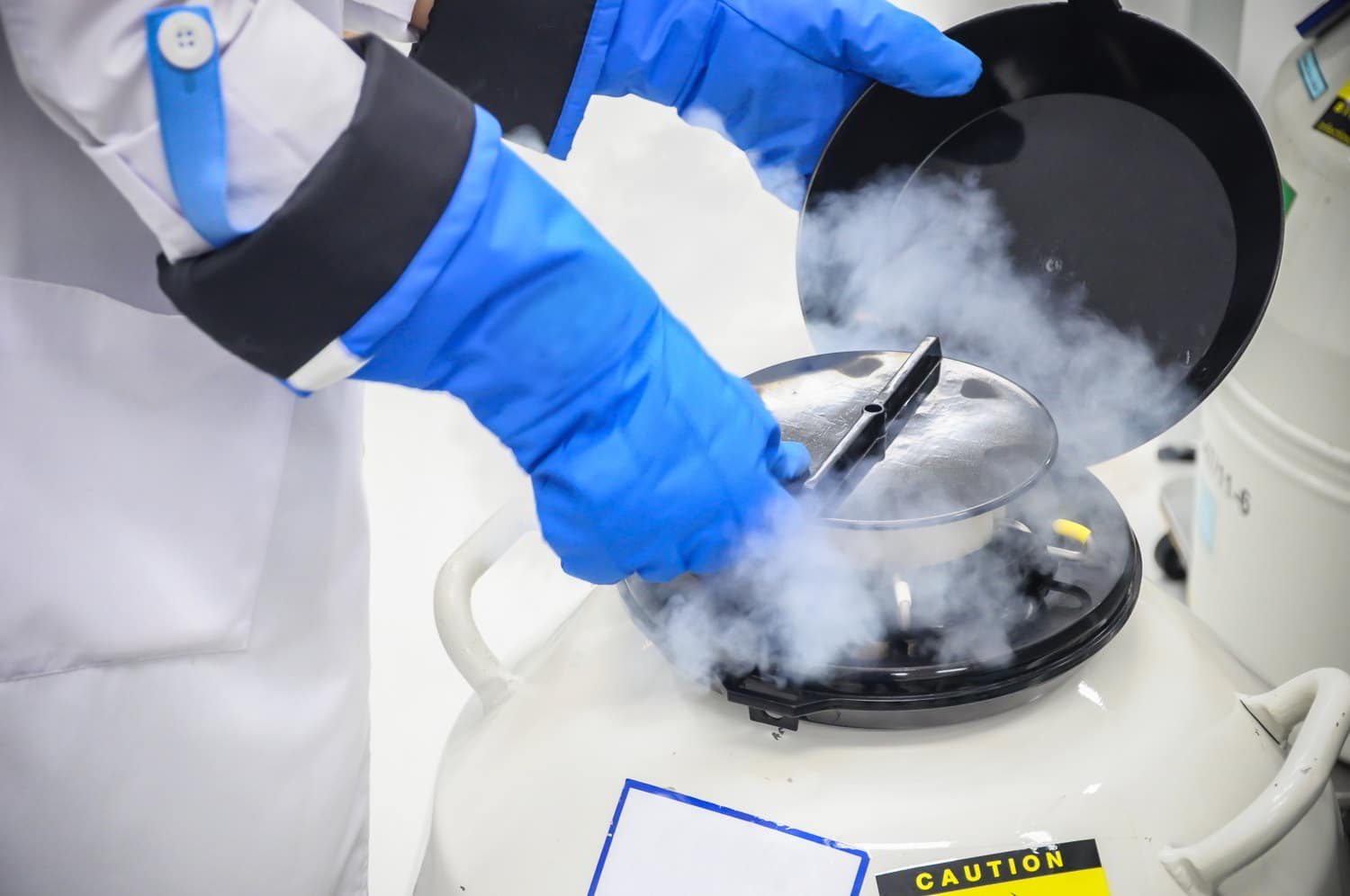

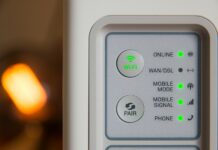
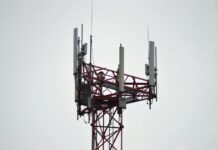
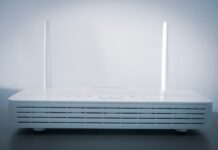

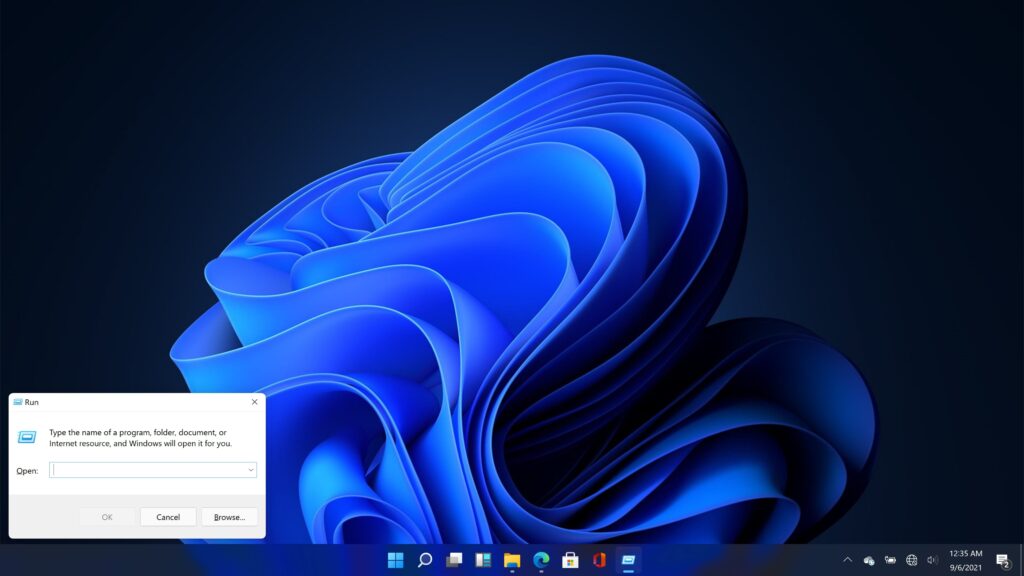 B) While in the run app, type ”msconfig.exe” and hit enter to launch the ”System Configuration” menu.NB: OK, SO AS FROM HERE YOU’VE GOT TO BE VERY CAREFUL BECAUSE YOU DON’T WANT TO MESS UP WITH YOUR BOOT-UP PROCESS SO DO ONLY WHAT IS SHOWN IN THIS TUTORIAL.
B) While in the run app, type ”msconfig.exe” and hit enter to launch the ”System Configuration” menu.NB: OK, SO AS FROM HERE YOU’VE GOT TO BE VERY CAREFUL BECAUSE YOU DON’T WANT TO MESS UP WITH YOUR BOOT-UP PROCESS SO DO ONLY WHAT IS SHOWN IN THIS TUTORIAL.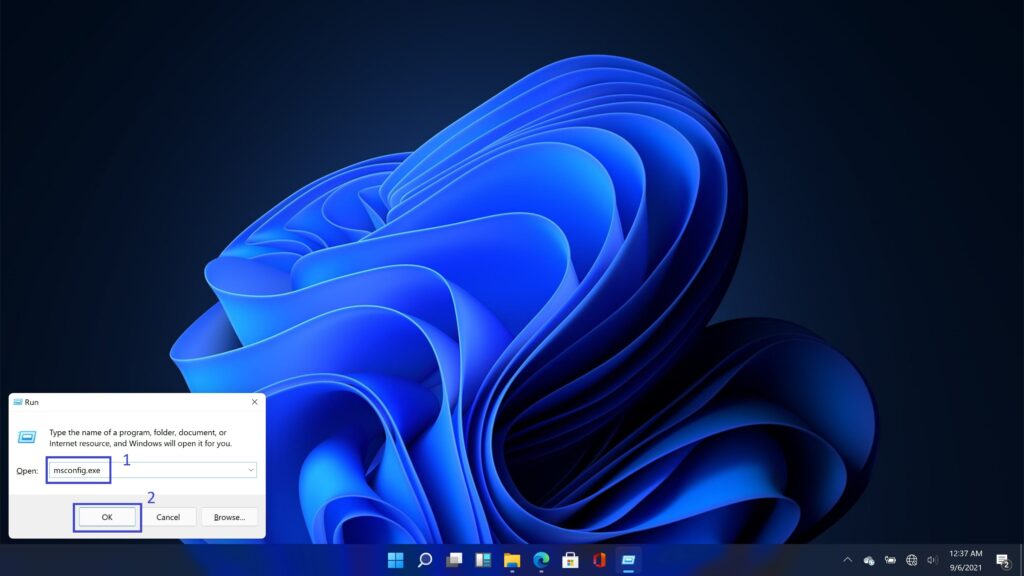 C) Click on the ”Boot” tab, which is the second tab from the left.
C) Click on the ”Boot” tab, which is the second tab from the left.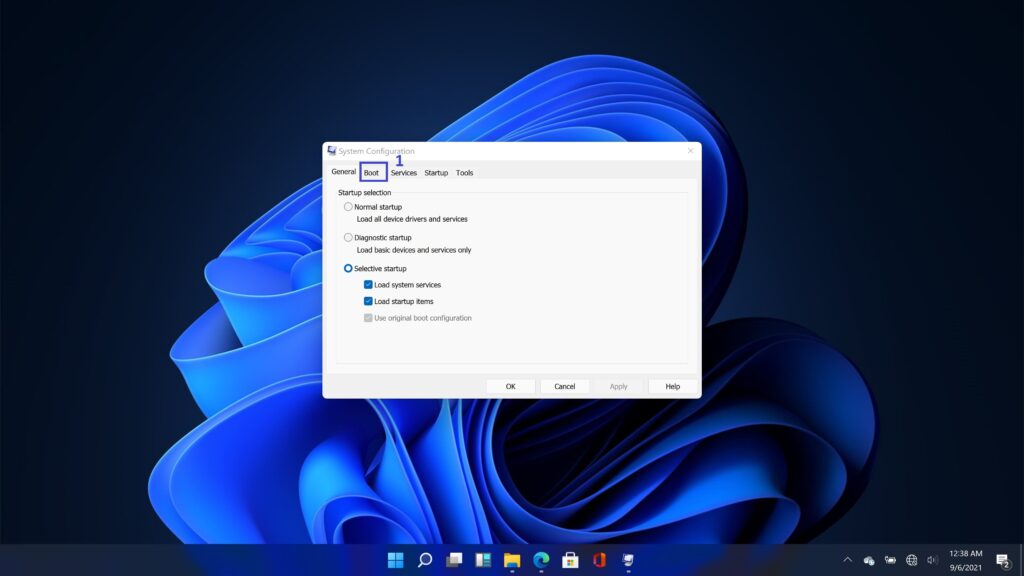 D) While in the boot tab, hit the ”Advanced options” button.
D) While in the boot tab, hit the ”Advanced options” button.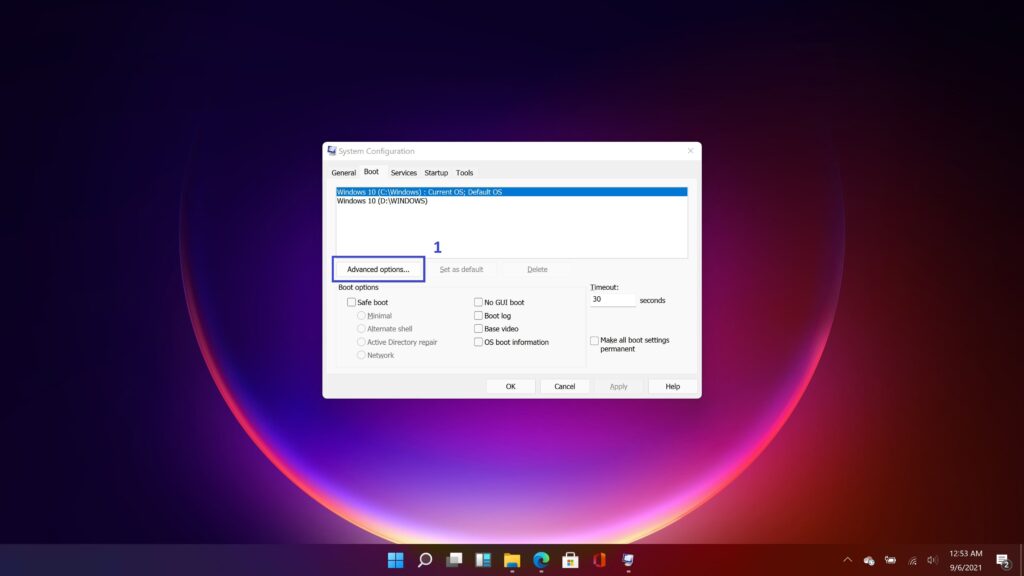 E) A new window will pop up. At its top left side, you will find a checkbox labeled ”Number of processors’‘ with a drop-down menu containing the total number of processors.F) At the top right of this window, appears a checkbox labeled ”Maximum memory” with an input value box under it.G) Check the box labeled ”Maximum number of processors”, click the drop-down menu under it, and select the highest value in that menu. This sets the Windows OS to use the highest number of threads available on your PC, which will go a long way in fixing a slow Windows 11 OS.H) Check the box labeled ”Maximum memory”, adjust the values to reach the PC’s maximum RAM then click ”OK” at the bottom of the window.This will automatically set Windows OS to use the maximum available memory (RAM), which can greatly contribute to fixing a slow Windows 11 OS.I) Click ”Apply” in the MS-Config window and click ”OK” to confirm changes then restart Your PC.
E) A new window will pop up. At its top left side, you will find a checkbox labeled ”Number of processors’‘ with a drop-down menu containing the total number of processors.F) At the top right of this window, appears a checkbox labeled ”Maximum memory” with an input value box under it.G) Check the box labeled ”Maximum number of processors”, click the drop-down menu under it, and select the highest value in that menu. This sets the Windows OS to use the highest number of threads available on your PC, which will go a long way in fixing a slow Windows 11 OS.H) Check the box labeled ”Maximum memory”, adjust the values to reach the PC’s maximum RAM then click ”OK” at the bottom of the window.This will automatically set Windows OS to use the maximum available memory (RAM), which can greatly contribute to fixing a slow Windows 11 OS.I) Click ”Apply” in the MS-Config window and click ”OK” to confirm changes then restart Your PC.
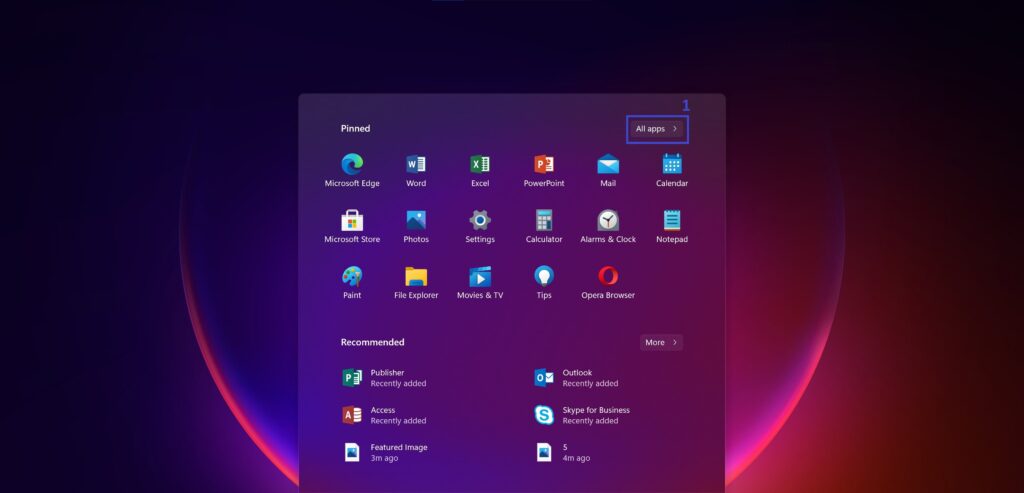
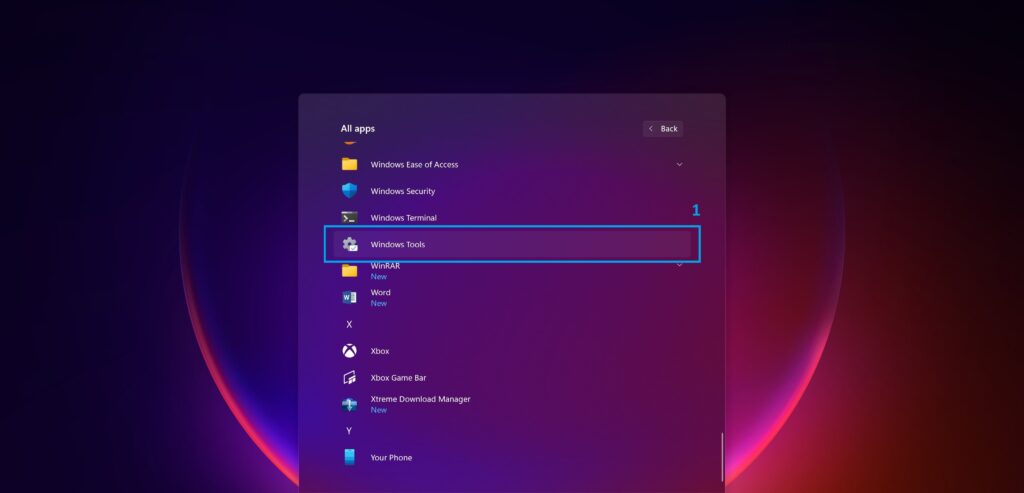
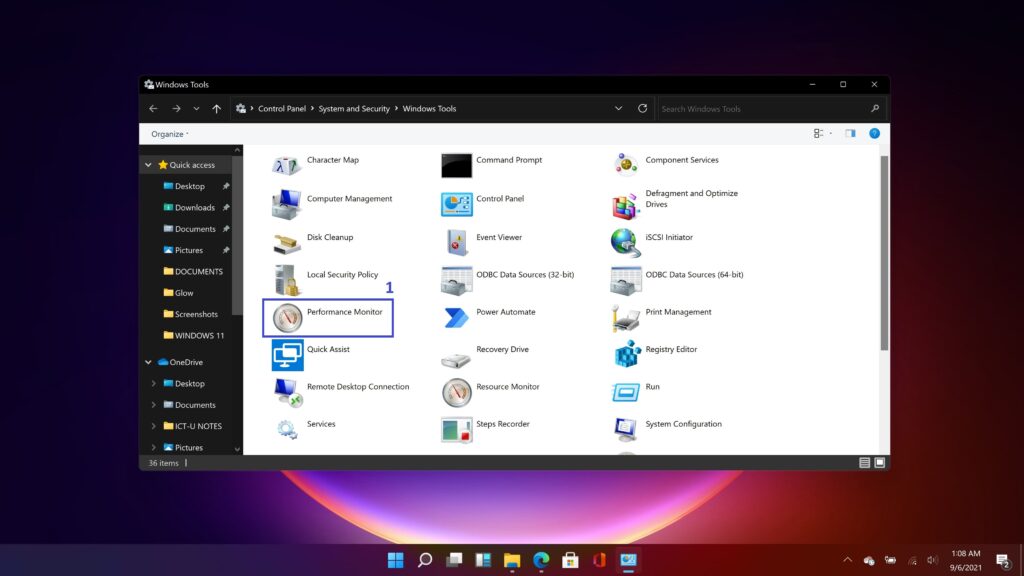 B) In the ”Performance Monitor” left side pane, click on the ”Data Collector Sets” drop-down menu.C) Under “data collector sets”, click ”User Defined”.D) Right-click within the main window pane and select ”New>Data Collector Set” in the expansion menu.
B) In the ”Performance Monitor” left side pane, click on the ”Data Collector Sets” drop-down menu.C) Under “data collector sets”, click ”User Defined”.D) Right-click within the main window pane and select ”New>Data Collector Set” in the expansion menu. E) In the new window, rename the data collector set and click ”Create manually (Advanced)” then click on ”Next”.
E) In the new window, rename the data collector set and click ”Create manually (Advanced)” then click on ”Next”.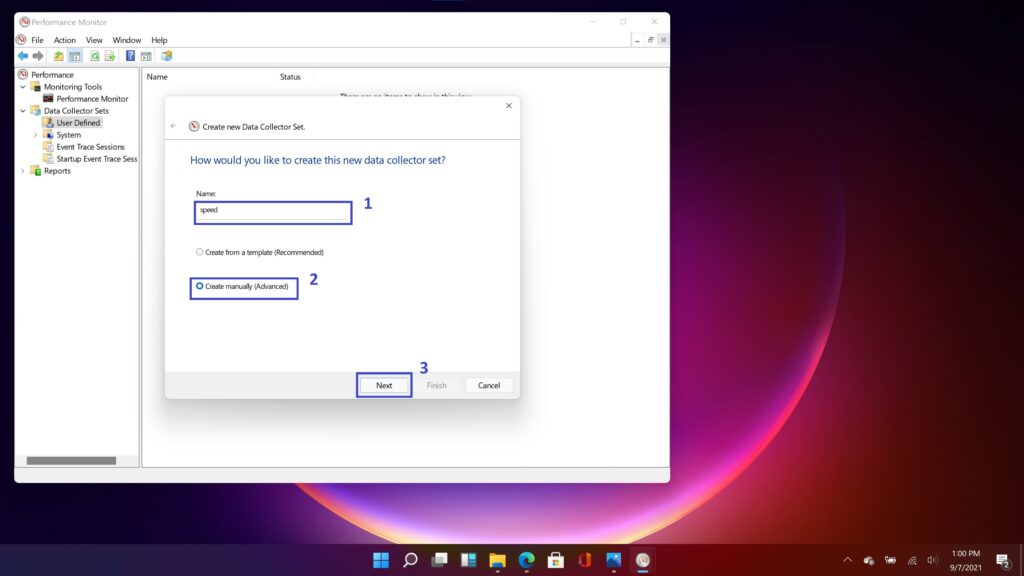
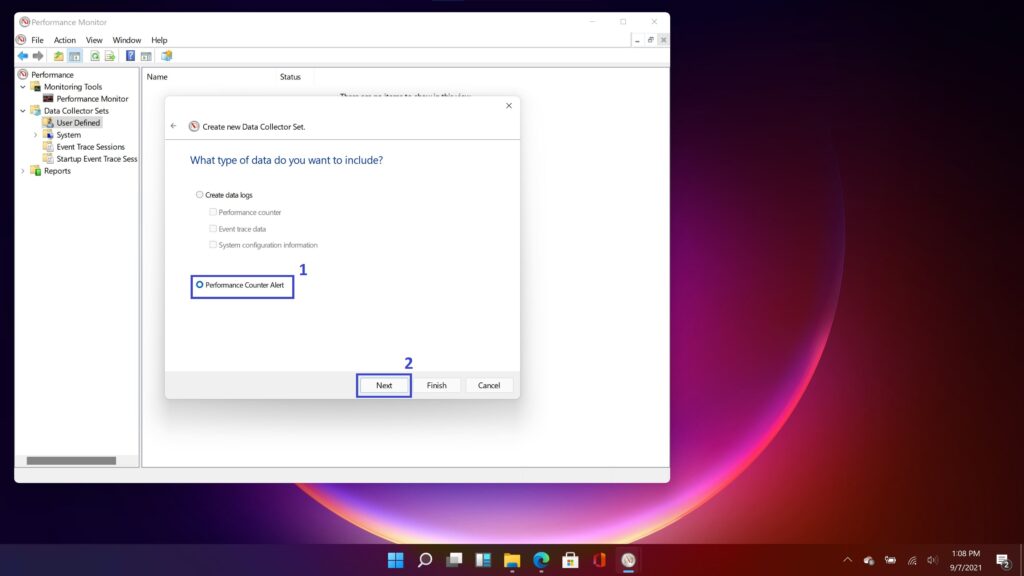 G) In the next window, click ”Add” at the top right.
G) In the next window, click ”Add” at the top right. H) At the bottom left pane of the next window scroll down to the highest number you see and click the ”Add” button.
H) At the bottom left pane of the next window scroll down to the highest number you see and click the ”Add” button.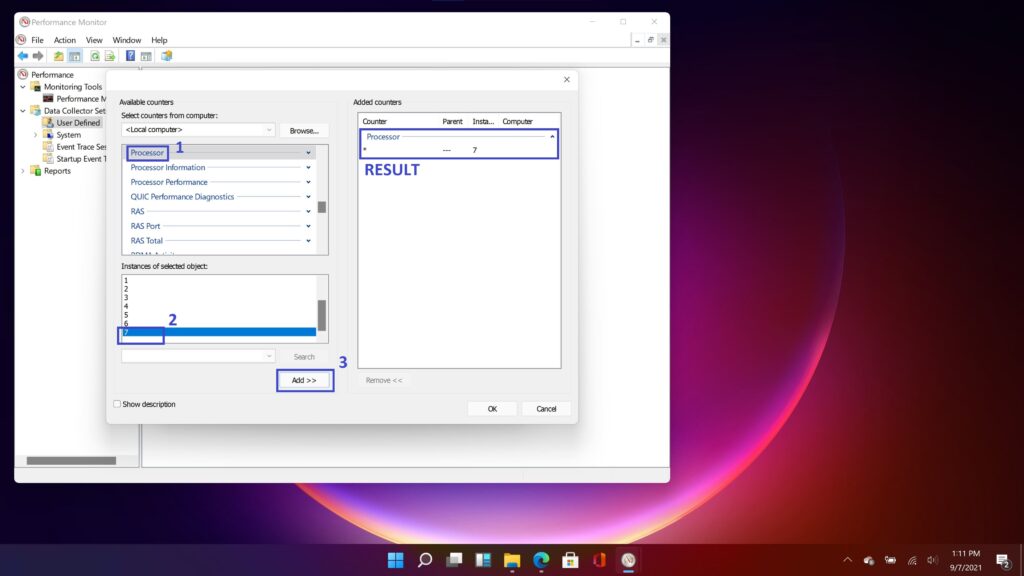 I) In the top-left pane, scroll down to process and click the drop-down menu arrow, then scroll down to the ”Thread Count” select it, and click ”Add”.
I) In the top-left pane, scroll down to process and click the drop-down menu arrow, then scroll down to the ”Thread Count” select it, and click ”Add”.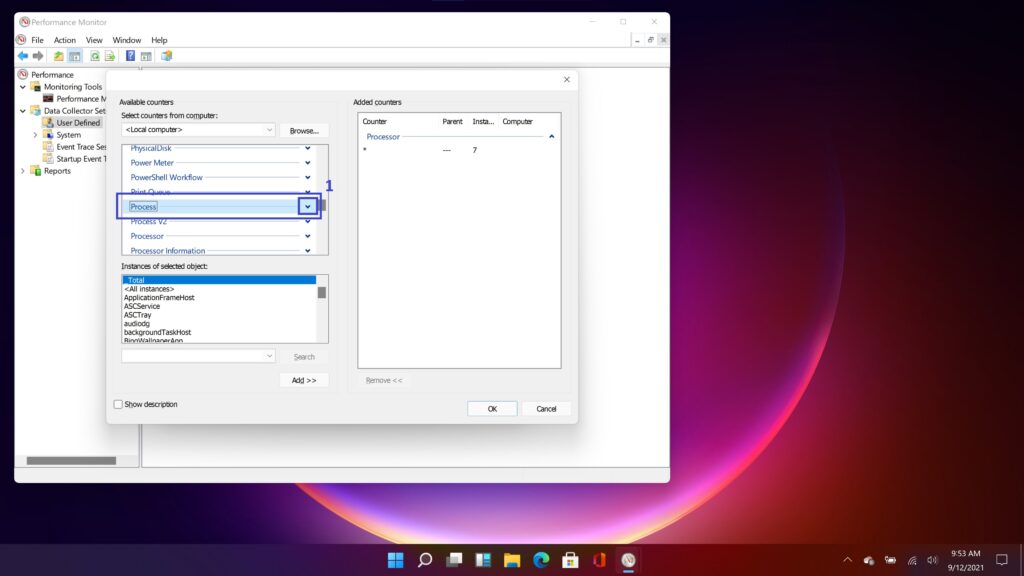
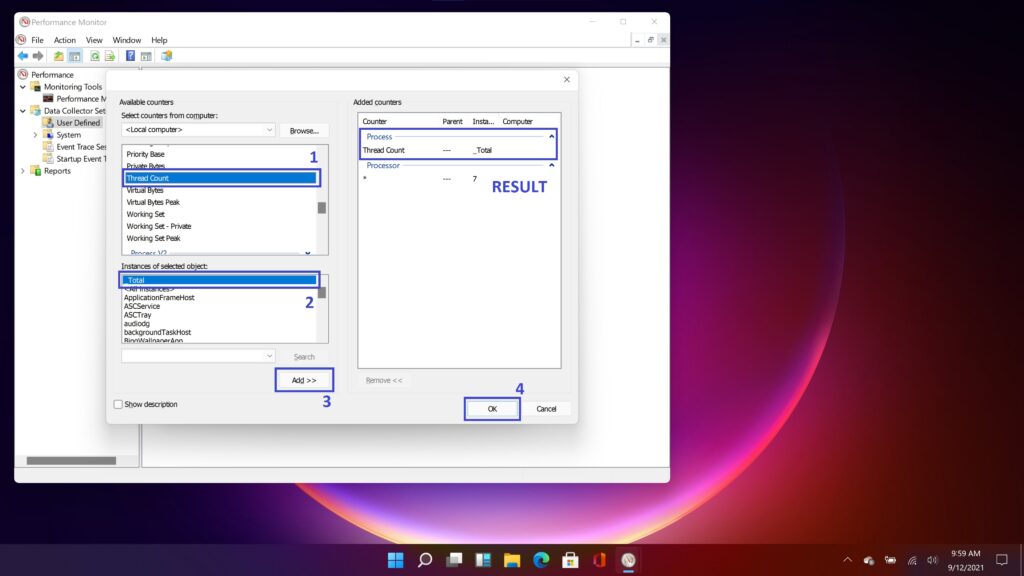 This will make Windows OS detect the threads which were activated using the system configuration menu and will, in turn, dedicate applications to use them.
This will make Windows OS detect the threads which were activated using the system configuration menu and will, in turn, dedicate applications to use them. J) Click ”OK” on this window, then click ”Next” till the last window where you will select the ”Save and close’‘ option, then click on ”Finish”.
J) Click ”OK” on this window, then click ”Next” till the last window where you will select the ”Save and close’‘ option, then click on ”Finish”.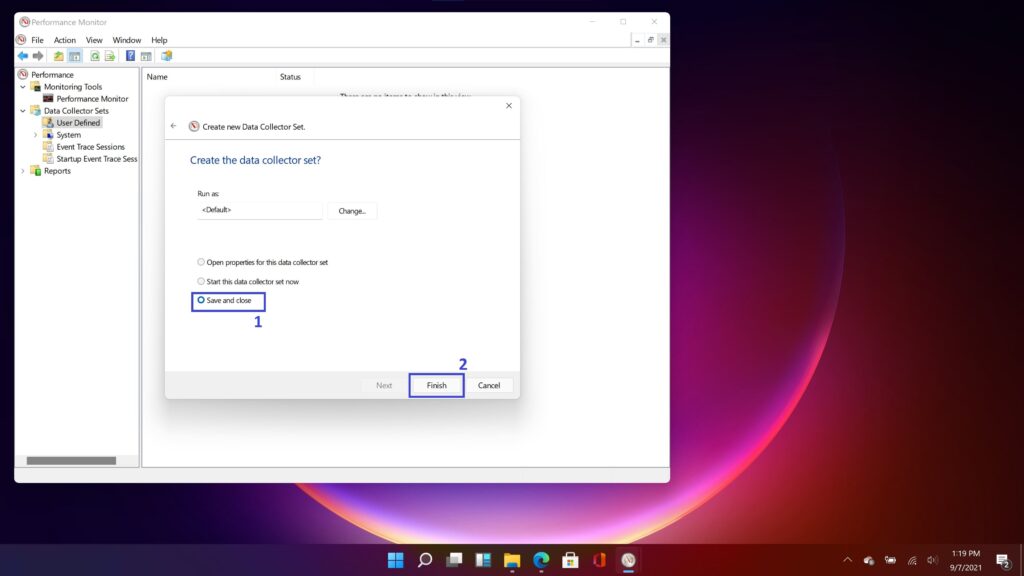 You will notice a cube-like icon in the performance monitor window, which is a save profile of your configuration and will take place immediately after a Fresh Reboot.
You will notice a cube-like icon in the performance monitor window, which is a save profile of your configuration and will take place immediately after a Fresh Reboot.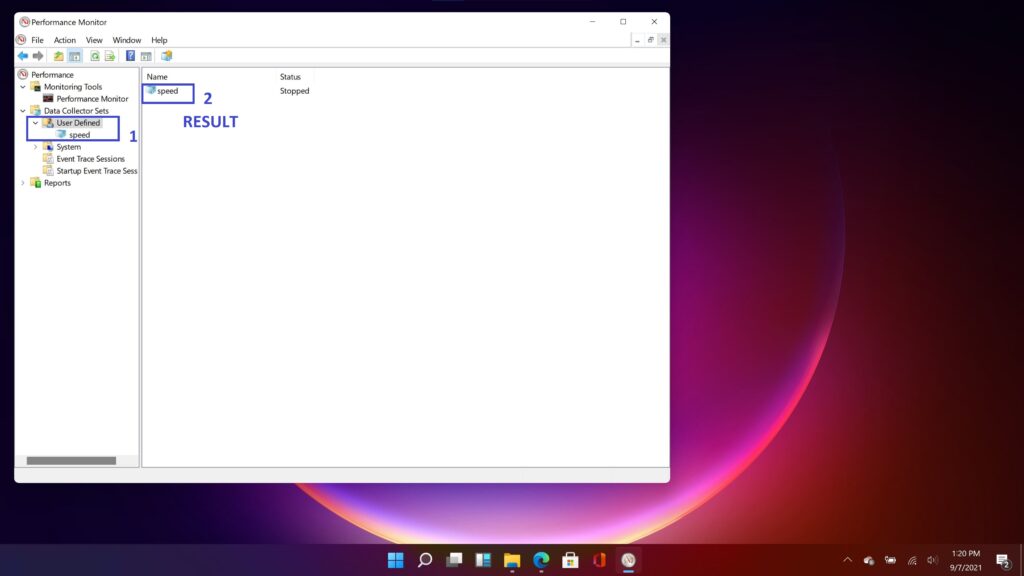
 B) Within the opened window right-click on any empty space and click properties. This will open the ”System Properties” window.
B) Within the opened window right-click on any empty space and click properties. This will open the ”System Properties” window.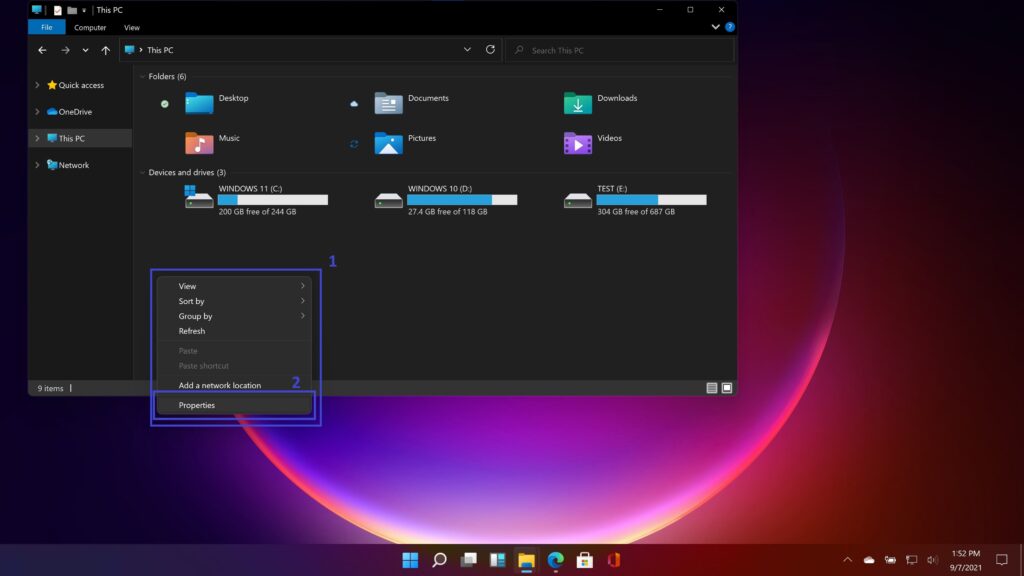 C) On the main window-pane of the newly opened window click on ”Advanced system settings” which will open the ”Advanced” tab within the “Advanced properties window“, with administrator privileges.
C) On the main window-pane of the newly opened window click on ”Advanced system settings” which will open the ”Advanced” tab within the “Advanced properties window“, with administrator privileges.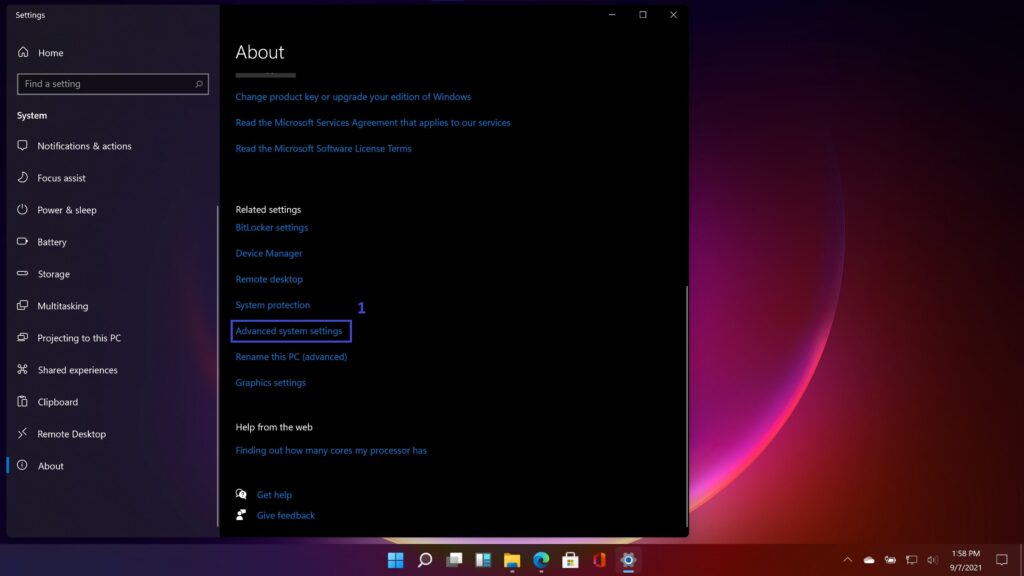 D) In the ”Advanced” tab, click on ”Settings” to open the ”Performance” menu.
D) In the ”Advanced” tab, click on ”Settings” to open the ”Performance” menu. E) In the newly opened window, you can select the option ”Let Windows choose what is best for my computer”.If you are looking forward to boosting a low-end PC, select ”Adjust for best performance” but Note that your windows interface appearance will greatly be sacrificed to free the RAM for more performance.
E) In the newly opened window, you can select the option ”Let Windows choose what is best for my computer”.If you are looking forward to boosting a low-end PC, select ”Adjust for best performance” but Note that your windows interface appearance will greatly be sacrificed to free the RAM for more performance. F) Within that same window, click the ”Advanced” tab, which is next to the “Visual Effects” tab, then click the ”Change” button under that tab.In the newly opened window, we will be trying to increase the available RAM by borrowing some memory from the hard disk drive to add to the existing RAM.This can be a big booster to a PC and can help you speed up Windows 11 PC.
F) Within that same window, click the ”Advanced” tab, which is next to the “Visual Effects” tab, then click the ”Change” button under that tab.In the newly opened window, we will be trying to increase the available RAM by borrowing some memory from the hard disk drive to add to the existing RAM.This can be a big booster to a PC and can help you speed up Windows 11 PC. G) In the ”Virtual Memory” window, uncheck the box for ”Automatically manage paging file size for all drives” at the top, to unlock all other options in this window.Select the drive where Windows 11 OS is installed.H) Select the ”Customize size” option below, which will permit you to edit your paging file size.I) In the ”Initial size” section enter your default PC RAM size in megabytes.My RAM is 16 GB, but since 1024 MB makes 1 GB my initial size will be 1024 x 16 giving 16384 MB.
G) In the ”Virtual Memory” window, uncheck the box for ”Automatically manage paging file size for all drives” at the top, to unlock all other options in this window.Select the drive where Windows 11 OS is installed.H) Select the ”Customize size” option below, which will permit you to edit your paging file size.I) In the ”Initial size” section enter your default PC RAM size in megabytes.My RAM is 16 GB, but since 1024 MB makes 1 GB my initial size will be 1024 x 16 giving 16384 MB.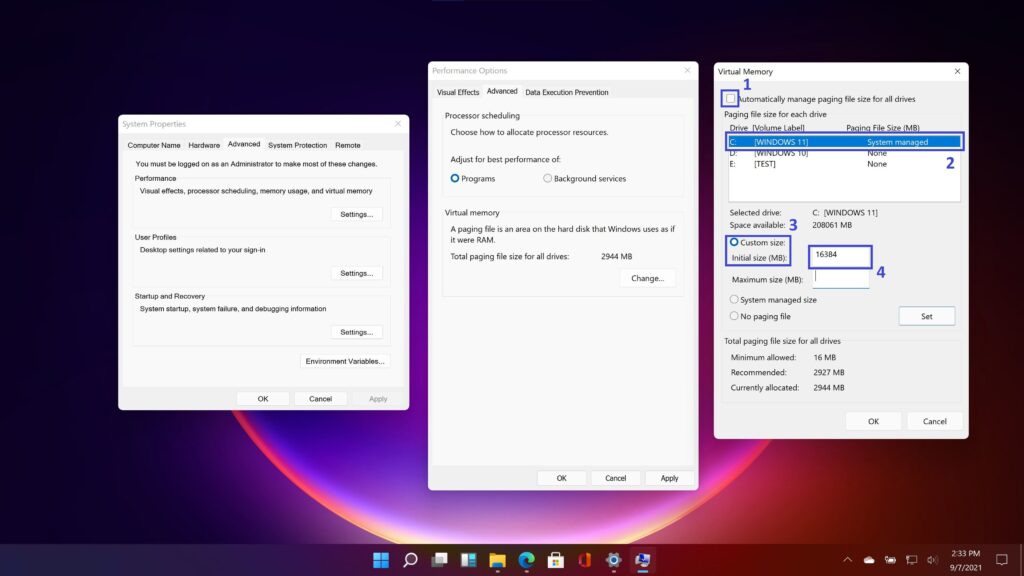 J) The next thing is to enter the ”Maximum size in (MB)”. Now don’t just go putting crazy figures because you want to increase your performance. There is an optimum value that can be input.To get this value, the rule of thumb is to first multiply your actual RAM by 1.5 and add the answer to your actual RAM.Next, multiply all your GB values by 1024 to convert them to MB values.For example;My RAM is 16 GB so we have to multiply 16 x 1.5 = 24Then add 24 + 16 = 40And finally multiply 40 x 1024 = 40960 MB.We can then type the value 40960 in the ”Maximum size in (MB)” box.(Feel free to correct my math in the comments)K) Click on ”Set”, ”Apply”, ”OK” and Restart your PC.
J) The next thing is to enter the ”Maximum size in (MB)”. Now don’t just go putting crazy figures because you want to increase your performance. There is an optimum value that can be input.To get this value, the rule of thumb is to first multiply your actual RAM by 1.5 and add the answer to your actual RAM.Next, multiply all your GB values by 1024 to convert them to MB values.For example;My RAM is 16 GB so we have to multiply 16 x 1.5 = 24Then add 24 + 16 = 40And finally multiply 40 x 1024 = 40960 MB.We can then type the value 40960 in the ”Maximum size in (MB)” box.(Feel free to correct my math in the comments)K) Click on ”Set”, ”Apply”, ”OK” and Restart your PC.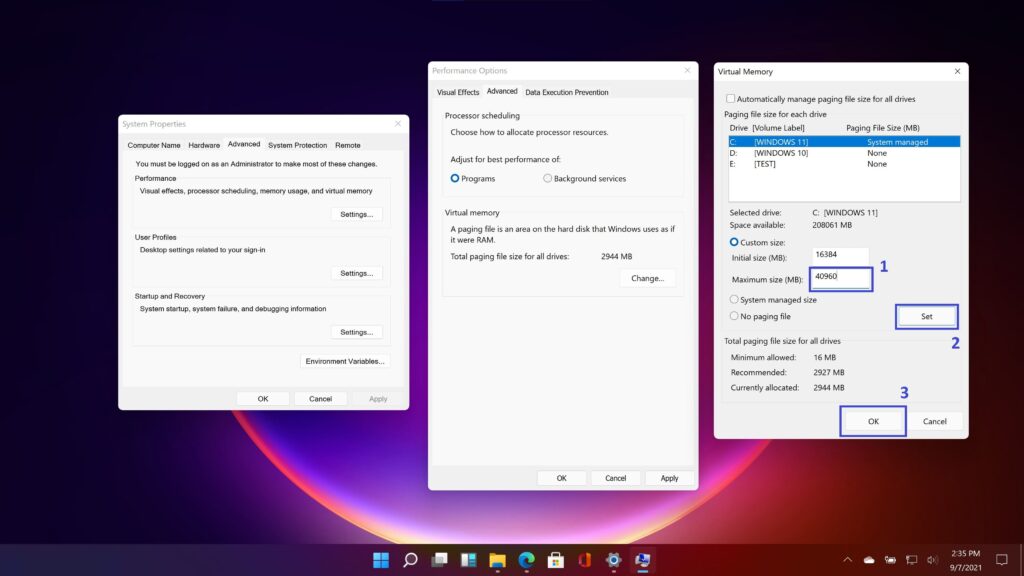
 C) Select a ”Drive” from the drop-down menu and click ”OK”.
C) Select a ”Drive” from the drop-down menu and click ”OK”. D) After a short while of loading, another window appears. Click on ”Clean up system files” at the bottom and wait for a while.
D) After a short while of loading, another window appears. Click on ”Clean up system files” at the bottom and wait for a while.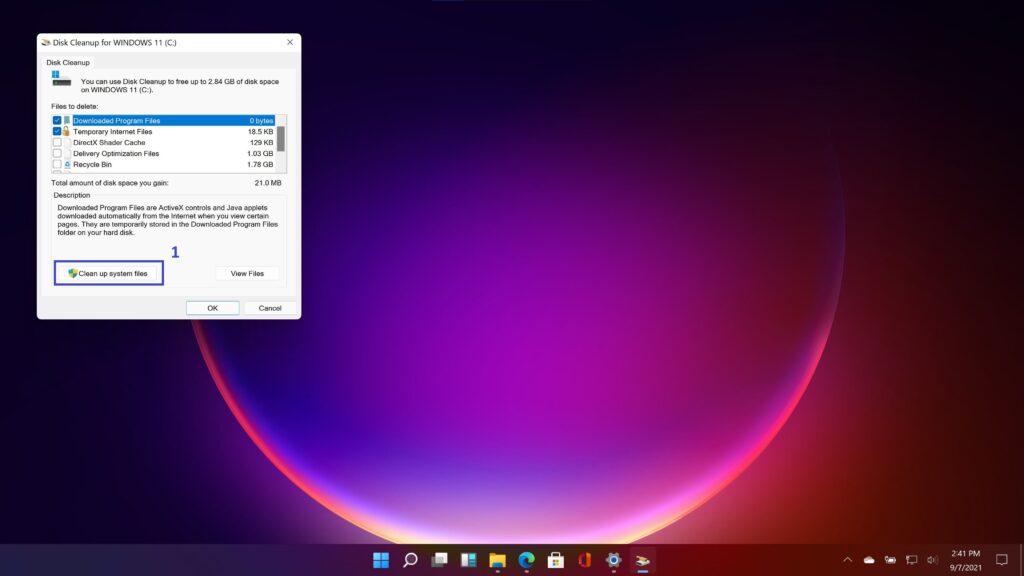 E) Select your ”(C:)” Drive or the drive that contains your system files, from the drop-down menu.
E) Select your ”(C:)” Drive or the drive that contains your system files, from the drop-down menu.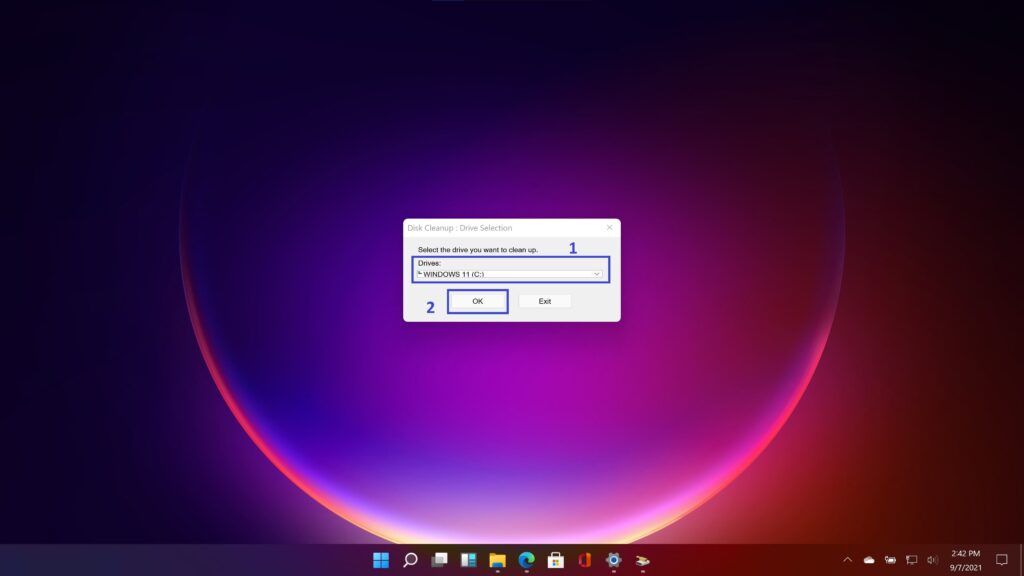 F) Select all the system files you want to permanently delete by checking the boxes beside them, click on ”OK” to permanently delete them.This process helps clean your system drive from hidden files, which when accumulated, can begin to slow your PC down. Doing this once in a while can help you speed up Windows 11.
F) Select all the system files you want to permanently delete by checking the boxes beside them, click on ”OK” to permanently delete them.This process helps clean your system drive from hidden files, which when accumulated, can begin to slow your PC down. Doing this once in a while can help you speed up Windows 11.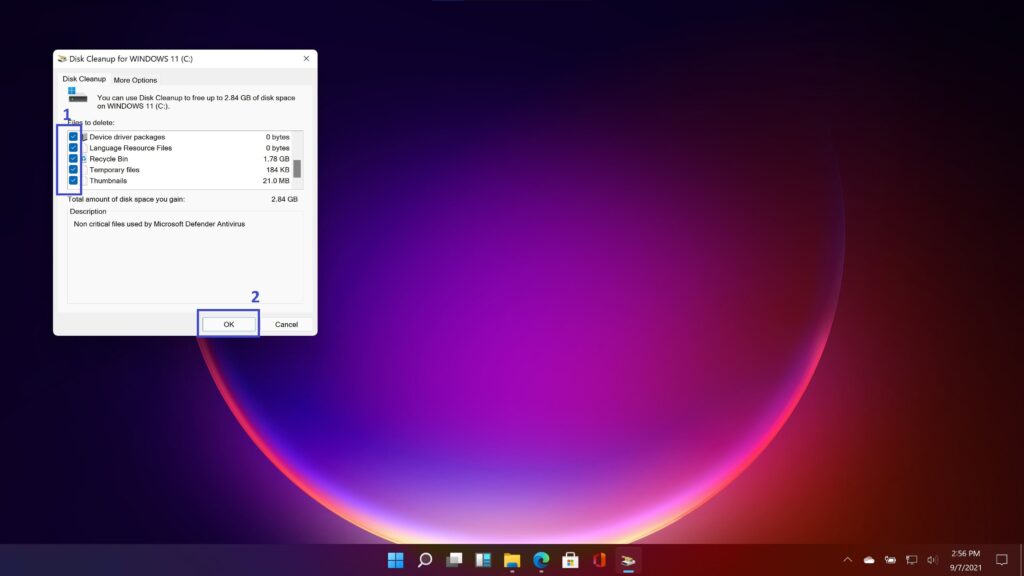
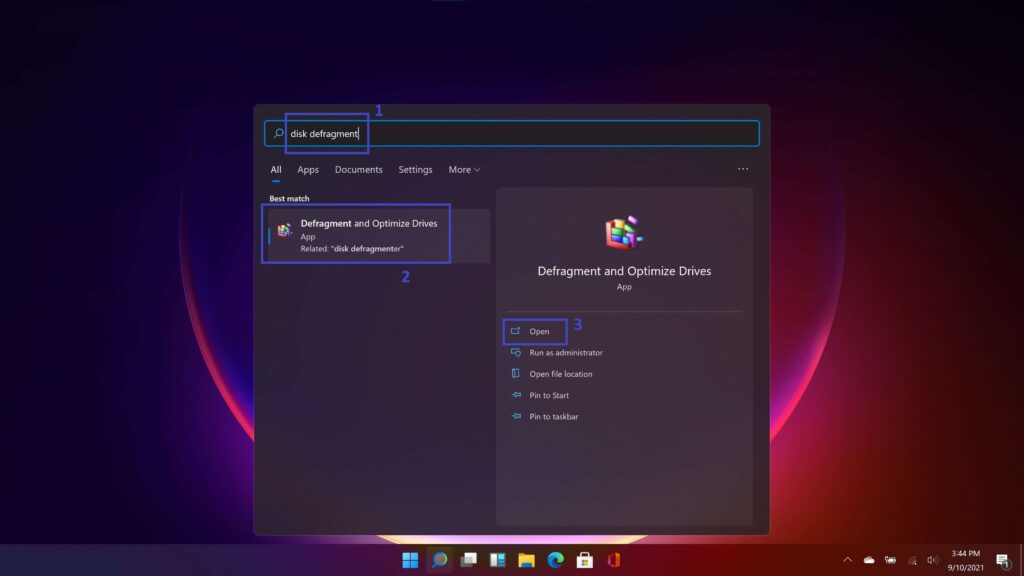 C) Select all your drives by holding down the “CTRL” key while clicking on all the drives.D) Click on “Analyze“, wait for some time let your PC analyze your Drives. After the analysis is complete, click on “Optimize“.
C) Select all your drives by holding down the “CTRL” key while clicking on all the drives.D) Click on “Analyze“, wait for some time let your PC analyze your Drives. After the analysis is complete, click on “Optimize“. NB: MAKE SURE YOUR OPTIMIZATION IS SCHEDULED TO AUTOMATICALLY OPTIMIZE YOUR DRIVES AFTER A CERTAIN AMOUNT OF TIME.NB: YOU CAN CHANGE YOUR AUTOMATIC OPTIMIZATION FREQUENCY BY CLICKING ON THE “Change Setting” BUTTON, THEN SCHEDULING OPTIMIZATIONS TO EITHER DAILY, WEEKLY, OR MONTHLY.E) After your drive optimization is done, click on the “Close” button at the bottom right.
NB: MAKE SURE YOUR OPTIMIZATION IS SCHEDULED TO AUTOMATICALLY OPTIMIZE YOUR DRIVES AFTER A CERTAIN AMOUNT OF TIME.NB: YOU CAN CHANGE YOUR AUTOMATIC OPTIMIZATION FREQUENCY BY CLICKING ON THE “Change Setting” BUTTON, THEN SCHEDULING OPTIMIZATIONS TO EITHER DAILY, WEEKLY, OR MONTHLY.E) After your drive optimization is done, click on the “Close” button at the bottom right. B) From your desktop right click your battery icon on your taskbar and select ”Power Options”. This will open the “Power Options” menu under the control panel.
B) From your desktop right click your battery icon on your taskbar and select ”Power Options”. This will open the “Power Options” menu under the control panel. C) Click on the ”Change plan settings” at the right side of the window. This will open the ”Edit Plan Settings” window.
C) Click on the ”Change plan settings” at the right side of the window. This will open the ”Edit Plan Settings” window.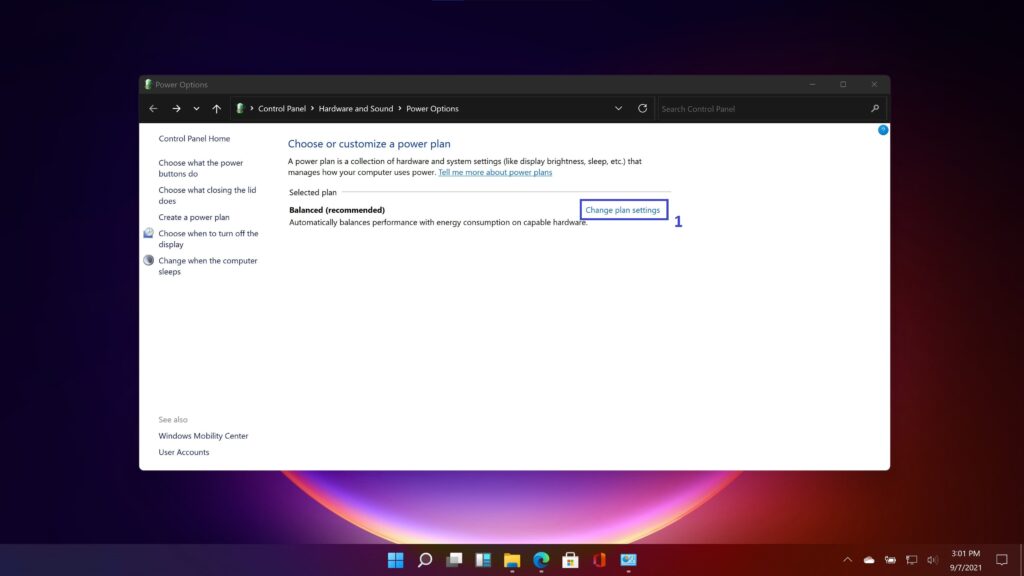 D) In the newly opened window, click on ”Change advanced power setting” at the bottom of the window.
D) In the newly opened window, click on ”Change advanced power setting” at the bottom of the window. E) In the new window, scroll down to ”Processor power management” and click the ”+” sign, to open the drop-down menu.F) Click ”+” sign, on ”Minimum processor state”, and set the value to 100% when “Plugged in“.Click ”+” sign, on ”Maximum processor state”, and set the value to 100% when “Plugged in”.Finally, click on the ”Apply” and ”OK” buttons.G) If you have a dedicated GPU, make sure you set it to the “Maximum Performance” option, when “Plugged in“.
E) In the new window, scroll down to ”Processor power management” and click the ”+” sign, to open the drop-down menu.F) Click ”+” sign, on ”Minimum processor state”, and set the value to 100% when “Plugged in“.Click ”+” sign, on ”Maximum processor state”, and set the value to 100% when “Plugged in”.Finally, click on the ”Apply” and ”OK” buttons.G) If you have a dedicated GPU, make sure you set it to the “Maximum Performance” option, when “Plugged in“.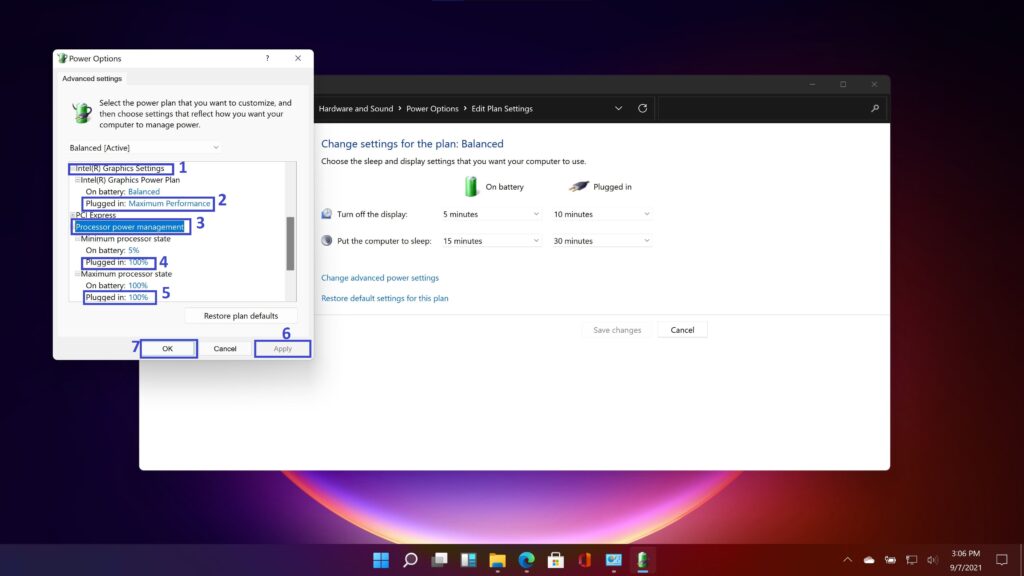 All the above settings will make the processor work at its optimum rate when the PC is plugged in, helping you to further speed up Windows 11.NB: IF YOUR PC HAS COOLING PROBLEMS, IGNORE THIS STEP AND RESET YOUR POWER SETTING TO DEFAULT. CHANGING YOUR COOLING POLICY CAN TRIGGER OVERHEATING
All the above settings will make the processor work at its optimum rate when the PC is plugged in, helping you to further speed up Windows 11.NB: IF YOUR PC HAS COOLING PROBLEMS, IGNORE THIS STEP AND RESET YOUR POWER SETTING TO DEFAULT. CHANGING YOUR COOLING POLICY CAN TRIGGER OVERHEATING B) Click the ”Services” tab, which is the third tab from the left.C) Click the checkbox labeled ”Hide all Microsoft services” at the bottom left of the window. This will hide all Microsoft services and leave all Non-Microsoft services visible.D) Then uncheck all non-essential services, like those from software not being used, and click ”Apply”.
B) Click the ”Services” tab, which is the third tab from the left.C) Click the checkbox labeled ”Hide all Microsoft services” at the bottom left of the window. This will hide all Microsoft services and leave all Non-Microsoft services visible.D) Then uncheck all non-essential services, like those from software not being used, and click ”Apply”.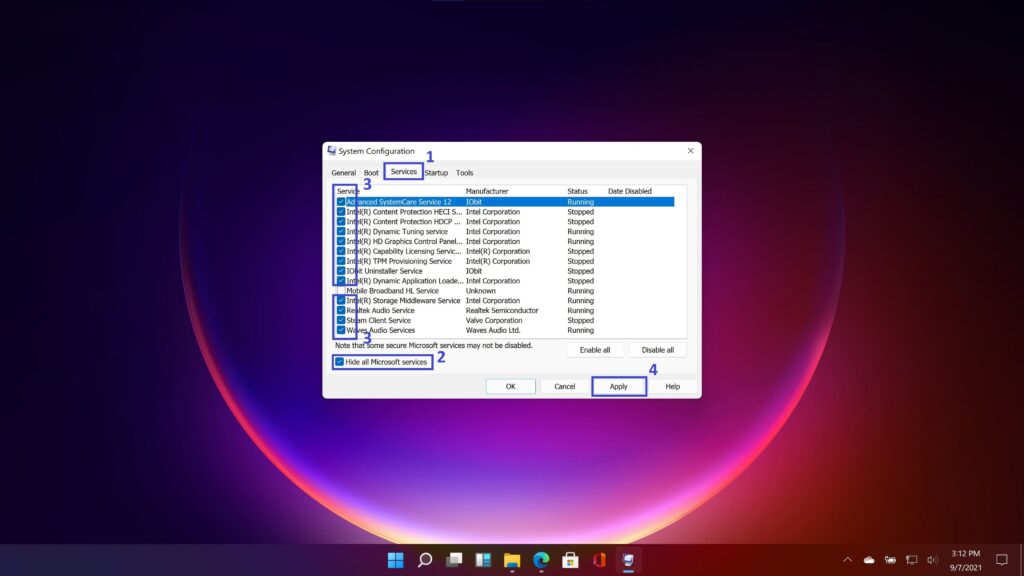 E) Click on the ”Startup” tab, which is the fourth tab from the left.F) While in that tab, click on ”Open Task Manager” to launch the ”Startup” tab in the task manager. Click on ”OK” in the “System Configuration” menu and click ”Exit Without Restart” on the following window that pops up.
E) Click on the ”Startup” tab, which is the fourth tab from the left.F) While in that tab, click on ”Open Task Manager” to launch the ”Startup” tab in the task manager. Click on ”OK” in the “System Configuration” menu and click ”Exit Without Restart” on the following window that pops up. G) In the “Task Manager“ “Start-up” menu, select all the unnecessary programs that launch during bootup and disable them by clicking on the “Disable” button at the bottom right.
G) In the “Task Manager“ “Start-up” menu, select all the unnecessary programs that launch during bootup and disable them by clicking on the “Disable” button at the bottom right.
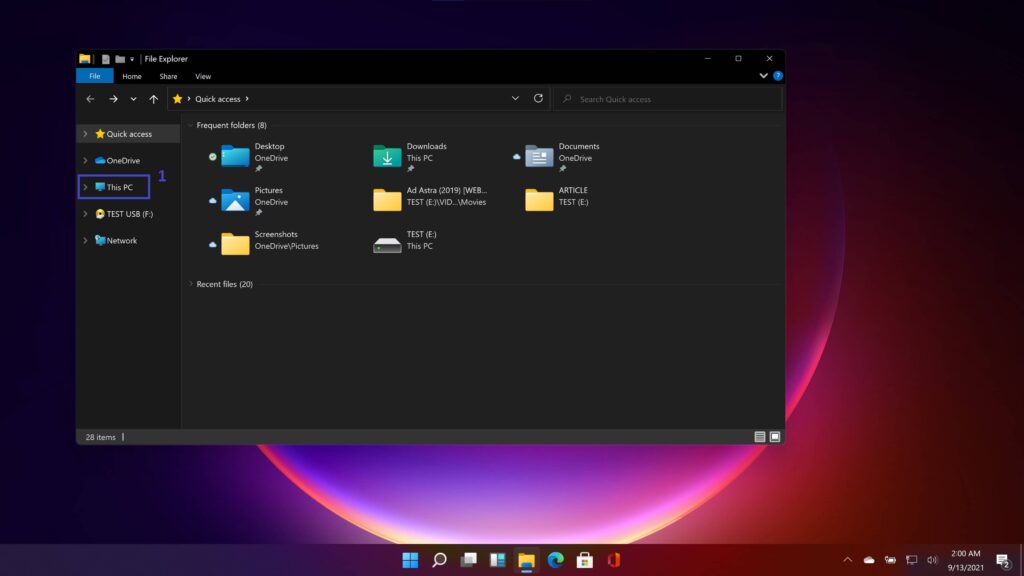 B) Plug in a USB device.NB: MAKE SURE YOU BACKUP THE CONTENTS OF THE PLUGGED-IN USB TO A SAFE LOCATION, OTHER THAN THAT USB ITSELF, TO AVOID LOSING EVERYTHING.
B) Plug in a USB device.NB: MAKE SURE YOU BACKUP THE CONTENTS OF THE PLUGGED-IN USB TO A SAFE LOCATION, OTHER THAN THAT USB ITSELF, TO AVOID LOSING EVERYTHING. C) Within the “This PC” window, locate the USB device you just plugged in and right-click on it. Click on the “Properties” option within the Windows contextual menu.
C) Within the “This PC” window, locate the USB device you just plugged in and right-click on it. Click on the “Properties” option within the Windows contextual menu.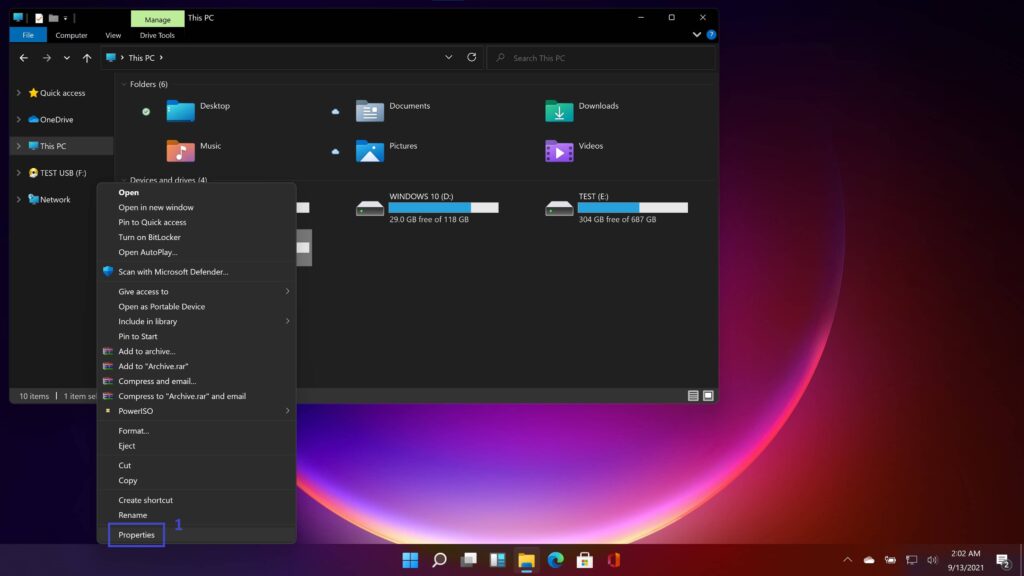 D) Within the “Properties” window, select the “ReadyBoost” tab.
D) Within the “Properties” window, select the “ReadyBoost” tab.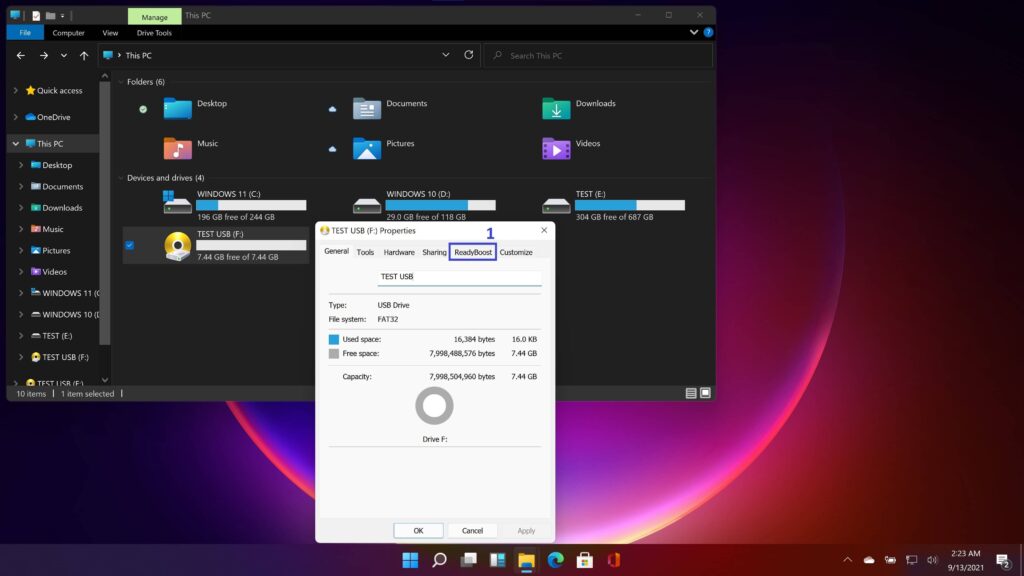 E) Within the “ReadyBoost” tab, click on the “Use this device” option, to use the current USB device to speed up Windows 11. If you have a spare USB (one which you don’t use, or don’t frequently use), you can choose the “Dedicate the device to ReadyBoost” option.By shifting your pointer to the right, set Windows 11 to use the maximum available space for “ReadyBoost“. Finally, click on “Apply” and “OK“.
E) Within the “ReadyBoost” tab, click on the “Use this device” option, to use the current USB device to speed up Windows 11. If you have a spare USB (one which you don’t use, or don’t frequently use), you can choose the “Dedicate the device to ReadyBoost” option.By shifting your pointer to the right, set Windows 11 to use the maximum available space for “ReadyBoost“. Finally, click on “Apply” and “OK“. NB: WHATEVER YOU CHOOSE, CAN ALWAYS RE-CONFIGURE YOUR USB DEVICE TO NORMAL BY SELECTING THE “Do not use this device” option.NB: NOT ALL USB DEVICES ARE ELIGIBLE FOR THE ABOVE PROCESS. IF YOU ARE UNABLE TO SEE THE OPTIONS IN THE TAB ABOVE, TRY DISCONNECTING AND RECONNECTING YOUR USB, REFRESHING YOUR PC, AND CLICKING ON THE “TestAgain” OPTION, WITHIN THE “ReadyBoost” TAB.
NB: WHATEVER YOU CHOOSE, CAN ALWAYS RE-CONFIGURE YOUR USB DEVICE TO NORMAL BY SELECTING THE “Do not use this device” option.NB: NOT ALL USB DEVICES ARE ELIGIBLE FOR THE ABOVE PROCESS. IF YOU ARE UNABLE TO SEE THE OPTIONS IN THE TAB ABOVE, TRY DISCONNECTING AND RECONNECTING YOUR USB, REFRESHING YOUR PC, AND CLICKING ON THE “TestAgain” OPTION, WITHIN THE “ReadyBoost” TAB.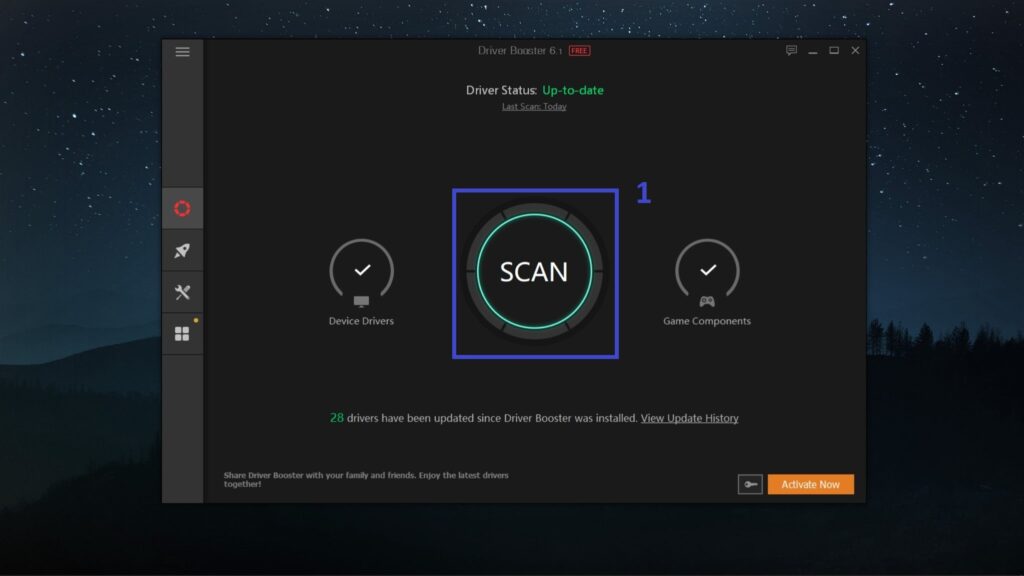
 C) Once the scanning process is completed, all the outdated drivers will be revealed. Select all of them and click the “UPDATE” button at the top right to update them to their latest versions.
C) Once the scanning process is completed, all the outdated drivers will be revealed. Select all of them and click the “UPDATE” button at the top right to update them to their latest versions.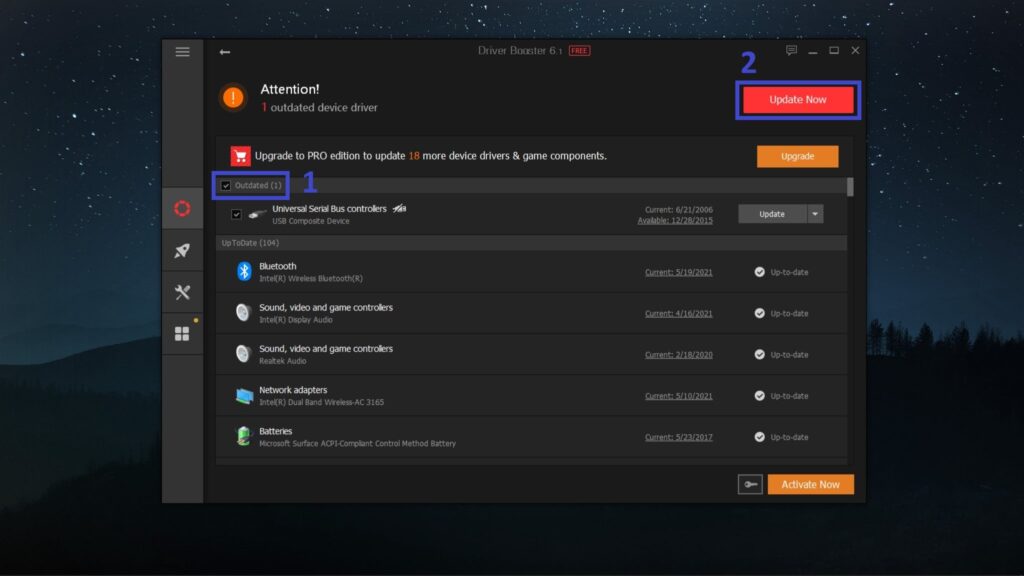 This software will also automatically create a system restore point for you, in case the update goes wrong and crashes your PC, you can always restore it.
This software will also automatically create a system restore point for you, in case the update goes wrong and crashes your PC, you can always restore it. Updating your drivers can significantly boost your operating system speed. You can either manually download your drivers and install, or automatically install them.D) Restart your PC after the process is complete.NB: In this tutorial, we are going to automatically be installing drivers using a driver updating software called Driver booster. Nevertheless, you can always update your drivers using different software or methods
Updating your drivers can significantly boost your operating system speed. You can either manually download your drivers and install, or automatically install them.D) Restart your PC after the process is complete.NB: In this tutorial, we are going to automatically be installing drivers using a driver updating software called Driver booster. Nevertheless, you can always update your drivers using different software or methods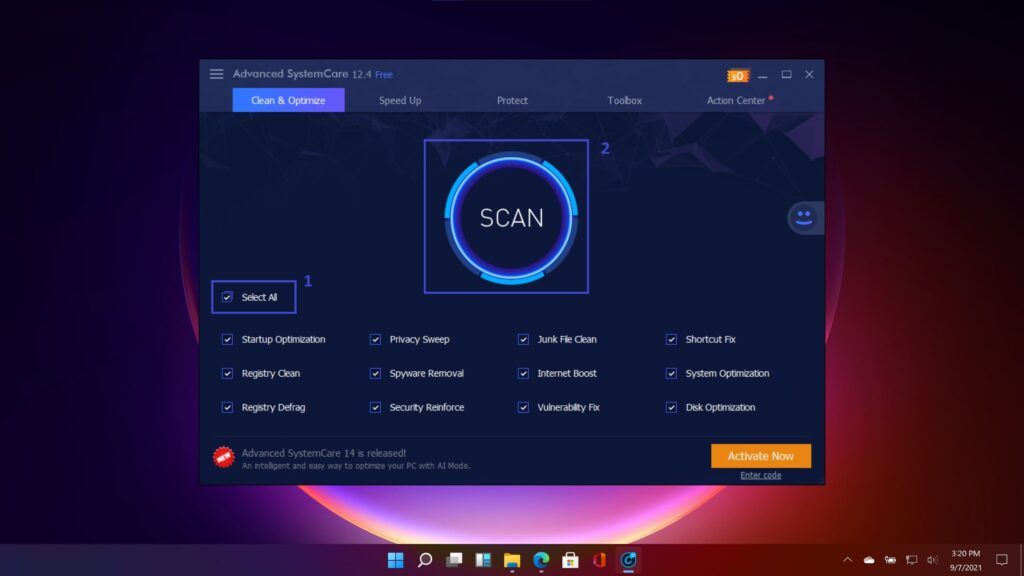 C) Click on ”SCAN” and click the checkbox below, making sure that the option ”Automatically fix” has been selected.This software will automatically carry out a number of optimizations such as optimizing start-up items, removing junk files, and so on. This will go a long way to boost your PC and speed up your Windows 11.
C) Click on ”SCAN” and click the checkbox below, making sure that the option ”Automatically fix” has been selected.This software will automatically carry out a number of optimizations such as optimizing start-up items, removing junk files, and so on. This will go a long way to boost your PC and speed up your Windows 11.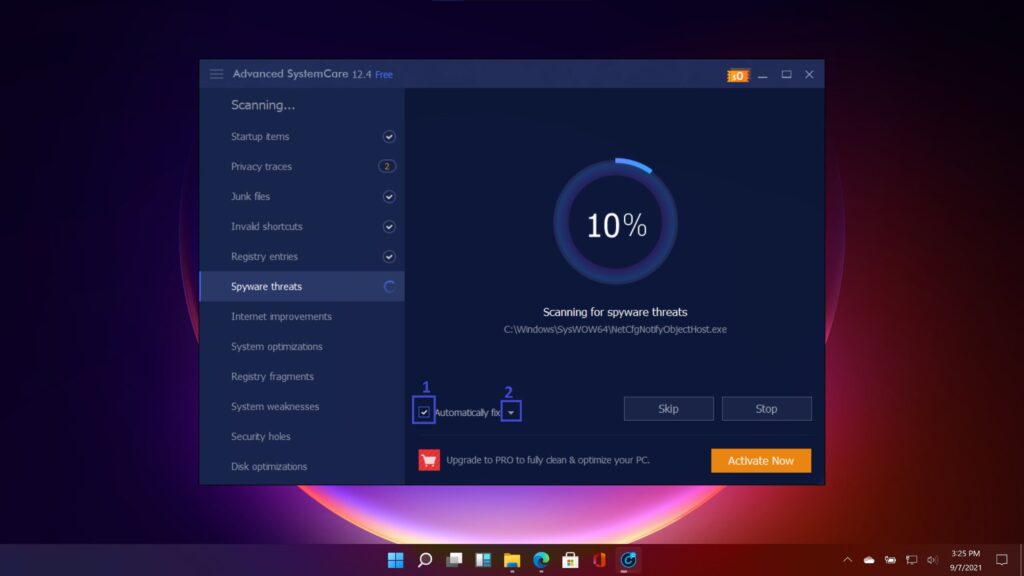 D) Download and install
D) Download and install  F) Use the various sorting options such as ”Recently Installed”, ”Infrequently Used” and ”Large Programs”.G) See which programs might be slowing down your PC, like programs under ”Infrequently Used”.H) Select them in bulk using their checkboxes on the left, and click uninstall.
F) Use the various sorting options such as ”Recently Installed”, ”Infrequently Used” and ”Large Programs”.G) See which programs might be slowing down your PC, like programs under ”Infrequently Used”.H) Select them in bulk using their checkboxes on the left, and click uninstall. I) Click the “Software Health” option on the left windowpane. Within the “Software Health” menu option, click on the “Scan Now” button at the top right.
I) Click the “Software Health” option on the left windowpane. Within the “Software Health” menu option, click on the “Scan Now” button at the top right.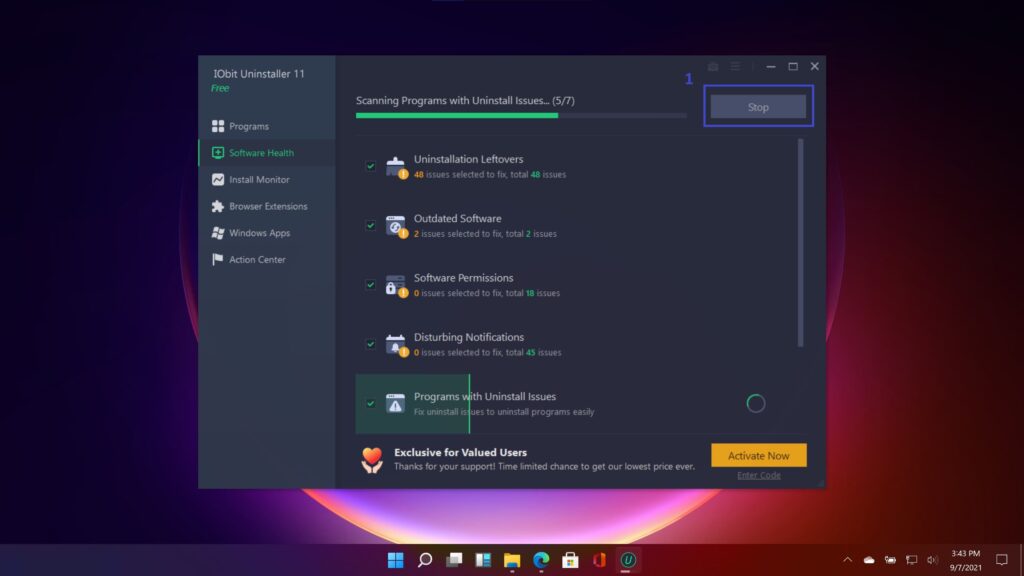 J) After the scanning process is over, click on the “fix” button to the right of each of the items which have the “fix” option.
J) After the scanning process is over, click on the “fix” button to the right of each of the items which have the “fix” option.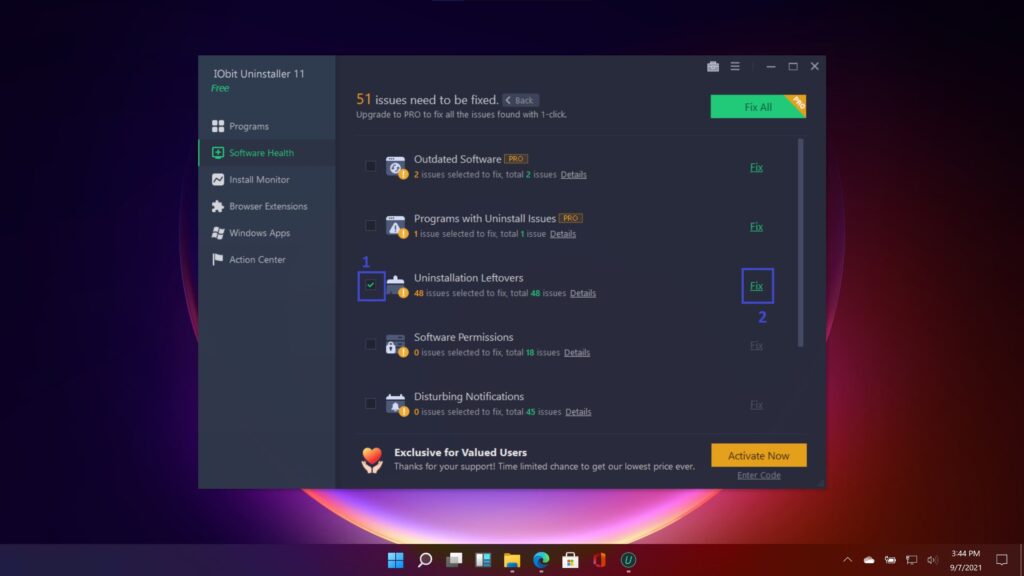 This software will help you free disk space, optimize your software, and eventually speed up Windows 11.NB: THERE ARE MANY OTHER FIXES THAT CAN BE DONE WITH ALL THE SOFTWARE MENTIONED ABOVE, BUT YOU WILL NEED TO BUY THE SOFTWARE. I WILL ENCOURAGE YOU TO BUY THEM AND GET THE MOST OUT OF THEM, AS THEY CAN GO A LONG WAY IN FIXING, OPTIMIZING, AND MAINTAINING YOUR WINDOWS PC.
This software will help you free disk space, optimize your software, and eventually speed up Windows 11.NB: THERE ARE MANY OTHER FIXES THAT CAN BE DONE WITH ALL THE SOFTWARE MENTIONED ABOVE, BUT YOU WILL NEED TO BUY THE SOFTWARE. I WILL ENCOURAGE YOU TO BUY THEM AND GET THE MOST OUT OF THEM, AS THEY CAN GO A LONG WAY IN FIXING, OPTIMIZING, AND MAINTAINING YOUR WINDOWS PC.